List of aircraft hijackings
The following is a list of notable aircraft hijackings.
| Terrorism |
|---|
List of notable aircraft hijackings
1910s

 March–July 1919: Fleeing from the Hungarian Soviet Republic, Franz Nopcsa von Felső-Szilvás seized a plane at gunpoint in Budapest to fly to Vienna.[1][2][3]
March–July 1919: Fleeing from the Hungarian Soviet Republic, Franz Nopcsa von Felső-Szilvás seized a plane at gunpoint in Budapest to fly to Vienna.[1][2][3]
1920s
.svg.png.webp) May 15, 1928: Harry W. Anderson was hijacked by Clarence Frechette while flying near Detroit. At 2,800 feet, Anderson was attacked by Frechette with a ballpeen hammer. They fought for the controls while flying over the city. The plane crash landed and both were taken to the hospital.[4]
May 15, 1928: Harry W. Anderson was hijacked by Clarence Frechette while flying near Detroit. At 2,800 feet, Anderson was attacked by Frechette with a ballpeen hammer. They fought for the controls while flying over the city. The plane crash landed and both were taken to the hospital.[4] 1929–1930 (unconfirmed): In the Fort Worth Star-Telegram daily newspaper (morning edition) 19 September 1970, J. Howard "Doc" DeCelles states that he was actually the victim of the first skyjacking in December 1929. He was flying a postal route for the Mexican company Transportes Aereos Transcontinentales, ferrying mail from San Luis Potosí to Torreon and then on to Guadalajara. He was approached by Gen. Saturnino Cedillo, governor of the state of San Luis Potosí and one of the last remaining lieutenants of Pancho Villa. Cedillo was accompanied by several other men. He was told through an interpreter that he had no choice in the matter; he had to fly the group to their chosen destination. He stalled long enough to convey the information to his boss, who told him to cooperate. He had no maps, but was guided by the men as he flew above Mexican mountains. He landed on a road as directed, and was held captive for several hours under armed guard. He eventually was released with a "Buenos" from Cedillo and his staff. DeCelles kept his flight log, according to the article, but he did not file a report with authorities. He went on to work for the FAA in Fort Worth after his flying career.
1929–1930 (unconfirmed): In the Fort Worth Star-Telegram daily newspaper (morning edition) 19 September 1970, J. Howard "Doc" DeCelles states that he was actually the victim of the first skyjacking in December 1929. He was flying a postal route for the Mexican company Transportes Aereos Transcontinentales, ferrying mail from San Luis Potosí to Torreon and then on to Guadalajara. He was approached by Gen. Saturnino Cedillo, governor of the state of San Luis Potosí and one of the last remaining lieutenants of Pancho Villa. Cedillo was accompanied by several other men. He was told through an interpreter that he had no choice in the matter; he had to fly the group to their chosen destination. He stalled long enough to convey the information to his boss, who told him to cooperate. He had no maps, but was guided by the men as he flew above Mexican mountains. He landed on a road as directed, and was held captive for several hours under armed guard. He eventually was released with a "Buenos" from Cedillo and his staff. DeCelles kept his flight log, according to the article, but he did not file a report with authorities. He went on to work for the FAA in Fort Worth after his flying career.
1930s
 February 12, 1931: The first recorded aircraft hijack took place in Arequipa, Peru. Byron Richards, flying a Ford Tri-Motor, was approached on the ground by armed revolutionaries. He refused to fly them anywhere and after a 10-day standoff, Richards was informed that the revolution was successful and he could go in return for flying one group member to Lima.[5]
February 12, 1931: The first recorded aircraft hijack took place in Arequipa, Peru. Byron Richards, flying a Ford Tri-Motor, was approached on the ground by armed revolutionaries. He refused to fly them anywhere and after a 10-day standoff, Richards was informed that the revolution was successful and he could go in return for flying one group member to Lima.[5].svg.png.webp) September 25, 1932: the Panair do Brasil Sikorsky S-38 registration P-BDAD, still bearing the titles of Nyrba do Brasil, was seized in the company's hangar by three men, who took a fourth as hostage. None were aviators but they managed to take off in the plane. However, the aircraft crashed in São João de Meriti, killing the four men. Apparently the hijacking was related to the events of the Constitutionalist Revolution in São Paulo, and it is considered to be the first Brazilian plane hijacking.[6][7]
September 25, 1932: the Panair do Brasil Sikorsky S-38 registration P-BDAD, still bearing the titles of Nyrba do Brasil, was seized in the company's hangar by three men, who took a fourth as hostage. None were aviators but they managed to take off in the plane. However, the aircraft crashed in São João de Meriti, killing the four men. Apparently the hijacking was related to the events of the Constitutionalist Revolution in São Paulo, and it is considered to be the first Brazilian plane hijacking.[6][7]
1940s
.svg.png.webp)
 July 25, 1947: A domestic Romanian flight from Bucharest to Craiova was hijacked by three army officers seeking political asylum from communist Romania. The airplane landed at Çanakkale in Turkey. During the hijacking, the flight mechanic, Mitrofan Bescioti, was shot by lieutenant Aurel Dobre.[8]
July 25, 1947: A domestic Romanian flight from Bucharest to Craiova was hijacked by three army officers seeking political asylum from communist Romania. The airplane landed at Çanakkale in Turkey. During the hijacking, the flight mechanic, Mitrofan Bescioti, was shot by lieutenant Aurel Dobre.[8].svg.png.webp)
 June 30, 1948: A domestic flight from Varna to Sofia was hijacked by Anti-Communists. The plane landed in Istanbul. The pilot was killed in the struggle.[9]
June 30, 1948: A domestic flight from Varna to Sofia was hijacked by Anti-Communists. The plane landed in Istanbul. The pilot was killed in the struggle.[9]- April 9, 1948: Twenty Czechs seized a Czech National Airlines commercial plane at gunpoint and flew it to the United States zone of Germany in a mid-air revolt. The hijackers wanted to flee communism in their homeland. Five of the passengers and one of the flight crew chose to return home to Czechoslovakia.

.svg.png.webp) July 16, 1948: Miss Macao, a seaplane, was hijacked in an attempted robbery and then crashed into the Pearl River Delta. The crash killed 25 of the 26 passengers and crew. The lead hijacker was the only survivor.
July 16, 1948: Miss Macao, a seaplane, was hijacked in an attempted robbery and then crashed into the Pearl River Delta. The crash killed 25 of the 26 passengers and crew. The lead hijacker was the only survivor..svg.png.webp)
.svg.png.webp) September 13, 1948: A T.A.E. commercial flight from Athens to Thessaloniki was hijacked by six young communists who asked the pilots to fly to Yugoslavia. The airplane landed near Skopje and, after the hijackers departed, the airplane returned to Greece. The 1987 film The Noose is based on this story.[10][11]
September 13, 1948: A T.A.E. commercial flight from Athens to Thessaloniki was hijacked by six young communists who asked the pilots to fly to Yugoslavia. The airplane landed near Skopje and, after the hijackers departed, the airplane returned to Greece. The 1987 film The Noose is based on this story.[10][11]
1950s

 March 24, 1950: Three Douglas DC-3s from Czechoslovakia were simultaneously hijacked by former Czech Royal Air Force pilots seeking asylum in the West. Most of the hijackers were the crew of all three aircraft. All three planes landed at the US Air Force Base at Erding, West Germany. 26 of 85 passengers stayed in West Germany to escape from the Communist regime in Czechoslovakia. This was the first incident of mass hijacking in aviation history.[12][13][14][15][16]
March 24, 1950: Three Douglas DC-3s from Czechoslovakia were simultaneously hijacked by former Czech Royal Air Force pilots seeking asylum in the West. Most of the hijackers were the crew of all three aircraft. All three planes landed at the US Air Force Base at Erding, West Germany. 26 of 85 passengers stayed in West Germany to escape from the Communist regime in Czechoslovakia. This was the first incident of mass hijacking in aviation history.[12][13][14][15][16]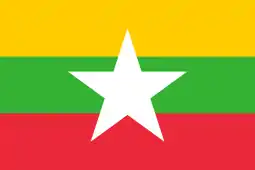 June 5, 1954: A team of KNDO (Karen National Defense Organization) led by Maj Saw Kyaw Aye hijacked a Dakota DC-3 of Union of Burma Airways flew from Rangoon (Yangon) to the Arakan (Rakhine) State capital, Sittwe. There were 14 passengers and four airline staff. A monk, a woman and military officers were among those on board. The plan of hijacking is to use the plane to smuggle weapons for KNDO to fight against the government army. Because of fuel shortage, the plane could not land at their intended location and the plan of smuggling weapons was unsuccessful. But there was a government-owned box of 700,000 kyats (US$450 in today's money), guarded by a military officer, which the hijackers had not known. As the original plan did not work, the hijackers decided to steal the money, hand over control of the plane, and flee.[17]
June 5, 1954: A team of KNDO (Karen National Defense Organization) led by Maj Saw Kyaw Aye hijacked a Dakota DC-3 of Union of Burma Airways flew from Rangoon (Yangon) to the Arakan (Rakhine) State capital, Sittwe. There were 14 passengers and four airline staff. A monk, a woman and military officers were among those on board. The plan of hijacking is to use the plane to smuggle weapons for KNDO to fight against the government army. Because of fuel shortage, the plane could not land at their intended location and the plan of smuggling weapons was unsuccessful. But there was a government-owned box of 700,000 kyats (US$450 in today's money), guarded by a military officer, which the hijackers had not known. As the original plan did not work, the hijackers decided to steal the money, hand over control of the plane, and flee.[17].svg.png.webp) July 13, 1956: Seven young Hungarian students, armed with nothing more than plastic wrenches, hijacked a small domestic aircraft out of Budapest and landed it at a NATO base in West Germany to escape from behind the Iron Curtain.
July 13, 1956: Seven young Hungarian students, armed with nothing more than plastic wrenches, hijacked a small domestic aircraft out of Budapest and landed it at a NATO base in West Germany to escape from behind the Iron Curtain..svg.png.webp)
 December 2, 1959: the Panair do Brasil Lockheed L-049/149 Constellation, registration PP-PCR, operating flight 246 en route from Rio de Janeiro – Santos Dumont to Belém, with 44 passengers and crew aboard, was seized and hijacked by officers of the Brazilian Air Force and made to land at Aragarças, Goiás. Their intention was to use the aircraft in a bombing of Government buildings in Rio de Janeiro, thereby starting a revolt against President Juscelino Kubitschek de Oliveira. The revolt faded after 36 hours and the aircraft was commanded to fly to Buenos Aires where the hijackers requested asylum. There were no casualties.[18][19]
December 2, 1959: the Panair do Brasil Lockheed L-049/149 Constellation, registration PP-PCR, operating flight 246 en route from Rio de Janeiro – Santos Dumont to Belém, with 44 passengers and crew aboard, was seized and hijacked by officers of the Brazilian Air Force and made to land at Aragarças, Goiás. Their intention was to use the aircraft in a bombing of Government buildings in Rio de Janeiro, thereby starting a revolt against President Juscelino Kubitschek de Oliveira. The revolt faded after 36 hours and the aircraft was commanded to fly to Buenos Aires where the hijackers requested asylum. There were no casualties.[18][19]
1960s
.svg.png.webp) July 19, 1960: In Australia's first hijacking, a man threatened to blow up Trans Australia Airlines Flight 408, but he was disarmed by a member of the crew and a passenger.[20]
July 19, 1960: In Australia's first hijacking, a man threatened to blow up Trans Australia Airlines Flight 408, but he was disarmed by a member of the crew and a passenger.[20] 1961: Hijackers forced an aircraft to circle Lisbon to drop leaflets against the dictatorship that ruled the country. After that, the 6 hijackers forced the crew to fly them back to Morocco.
1961: Hijackers forced an aircraft to circle Lisbon to drop leaflets against the dictatorship that ruled the country. After that, the 6 hijackers forced the crew to fly them back to Morocco.
 May 1, 1961: First U.S. Airline flight hijacked to Cuba. A National Airlines Convair 440 flight from Marathon, Florida to Key West was hijacked by a man carrying a knife and a gun who demanded the flight divert to Havana. The aircraft, piloted by Captain Francis X. Riley, was thought to be lost at sea for several hours before authorities learned it had been hijacked.[21]
May 1, 1961: First U.S. Airline flight hijacked to Cuba. A National Airlines Convair 440 flight from Marathon, Florida to Key West was hijacked by a man carrying a knife and a gun who demanded the flight divert to Havana. The aircraft, piloted by Captain Francis X. Riley, was thought to be lost at sea for several hours before authorities learned it had been hijacked.[21]
 July 24, 1961: An Eastern Airlines airplane, performing Eastern Flight 202, is hijacked during a flight between Miami, Florida and Dallas, Texas. The plane was flown to Cuba, and all occupants were allowed to return to the United States.[22] Among the passengers were world champion boxer Luis Manuel Rodriguez, among with his training staff.
July 24, 1961: An Eastern Airlines airplane, performing Eastern Flight 202, is hijacked during a flight between Miami, Florida and Dallas, Texas. The plane was flown to Cuba, and all occupants were allowed to return to the United States.[22] Among the passengers were world champion boxer Luis Manuel Rodriguez, among with his training staff. July 31, 1961: The first attempted 'skyjacking' of an airline on American soil. Said to be 'inspired by numerous airliner hijackings from other countries to Cuba', pipeline worker Bruce Britt, Sr., boarded and attempted to commandeer a Pacific Airlines flight at the Chico Municipal Airport, in Chico, California, intending to return to his home in Smackover, Arkansas. The attempt failed, but Britt shot two airline employees, blinding one for life.[23]
July 31, 1961: The first attempted 'skyjacking' of an airline on American soil. Said to be 'inspired by numerous airliner hijackings from other countries to Cuba', pipeline worker Bruce Britt, Sr., boarded and attempted to commandeer a Pacific Airlines flight at the Chico Municipal Airport, in Chico, California, intending to return to his home in Smackover, Arkansas. The attempt failed, but Britt shot two airline employees, blinding one for life.[23] August 3, 1961: Leon and Cody Bearden hijacked Continental Airlines Flight 54 traveling from Los Angeles to Houston armed with pistols. The Boeing 707 was to be used as a bargaining chip to gain political asylum with Fidel Castro in Cuba. The ordeal ended in El Paso, Texas during re-fueling when Border Patrol Agent Leonard Gilman, who had volunteered to be a hostage, punched Bearden with such force it shattered Gilman's hand.[24]
August 3, 1961: Leon and Cody Bearden hijacked Continental Airlines Flight 54 traveling from Los Angeles to Houston armed with pistols. The Boeing 707 was to be used as a bargaining chip to gain political asylum with Fidel Castro in Cuba. The ordeal ended in El Paso, Texas during re-fueling when Border Patrol Agent Leonard Gilman, who had volunteered to be a hostage, punched Bearden with such force it shattered Gilman's hand.[24]
.svg.png.webp) September 28, 1966: Argentine nationalists, styling themselves 'Condors', hijacked a plane and forced the pilot to fly to Stanley, Falkland Islands.[25]
September 28, 1966: Argentine nationalists, styling themselves 'Condors', hijacked a plane and forced the pilot to fly to Stanley, Falkland Islands.[25]
 July 23, 1968: To date, the only successful El Al hijacking attempt, as three members of Popular Front for the Liberation of Palestine (PFLP) hijacked El Al Flight 426 from Rome to Tel Aviv. Diverting to Algiers, the negotiations extended over forty days. Both the hijackers and the hostages went free.
July 23, 1968: To date, the only successful El Al hijacking attempt, as three members of Popular Front for the Liberation of Palestine (PFLP) hijacked El Al Flight 426 from Rome to Tel Aviv. Diverting to Algiers, the negotiations extended over forty days. Both the hijackers and the hostages went free. November 8, 1968: An Olympic Airways flight out of Paris was hijacked by two Italian men, who carried a handgun and a grenade. The hijackers forced the crew to hand out pamphlets to the crew. The hijackers claimed to be members of the International Command for Greece. The two men later surrendered after directing the plane back to Paris.[26]
November 8, 1968: An Olympic Airways flight out of Paris was hijacked by two Italian men, who carried a handgun and a grenade. The hijackers forced the crew to hand out pamphlets to the crew. The hijackers claimed to be members of the International Command for Greece. The two men later surrendered after directing the plane back to Paris.[26]
 November 24, 1968: Luis Armando Pena Soltren, Jose Rafael Rios Cruz and Miguel Castro coerced the pilot of Pan Am Flight 281 out of New York's John F. Kennedy Airport to divert from a scheduled route to Puerto Rico to Havana, Cuba.[27][28] Passengers were evacuated from Cuba by a U.S. State Department aircraft. There were no fatalities.
November 24, 1968: Luis Armando Pena Soltren, Jose Rafael Rios Cruz and Miguel Castro coerced the pilot of Pan Am Flight 281 out of New York's John F. Kennedy Airport to divert from a scheduled route to Puerto Rico to Havana, Cuba.[27][28] Passengers were evacuated from Cuba by a U.S. State Department aircraft. There were no fatalities.
 February 3, 1969: Eastern Airlines flight from Newark to Miami was hijacked by two Cuban nationals who diverted it to Havana, Cuba. The plane landed safely in Havana, and the passengers were allowed to return to the United States unharmed.[29]
February 3, 1969: Eastern Airlines flight from Newark to Miami was hijacked by two Cuban nationals who diverted it to Havana, Cuba. The plane landed safely in Havana, and the passengers were allowed to return to the United States unharmed.[29]- August 29, 1969: TWA Flight 840 was a Trans World Airlines flight from Leonardo da Vinci International Airport in Rome, Italy to Ben Gurion International Airport in Tel Aviv, Israel, that was hijacked on 29 August 1969. There were no injuries or fatalities, although the aircraft was significantly damaged, and two hostages were held for two months.
.svg.png.webp)
 October 8, 1969: a Cruzeiro do Sul Sud Aviation SE-210 Caravelle VI R en route from Belém-Val de Cães to Manaus-Ponta Pelada was hijacked by 4 people who demanded to be flown to Cuba. The hijack lasted less than a day and there were no casualties.[30]
October 8, 1969: a Cruzeiro do Sul Sud Aviation SE-210 Caravelle VI R en route from Belém-Val de Cães to Manaus-Ponta Pelada was hijacked by 4 people who demanded to be flown to Cuba. The hijack lasted less than a day and there were no casualties.[30]

 October 31, 1969: TWA Flight 85 en route from Los Angeles to San Francisco was hijacked by 19-year-old US Marine Raffaele Minichiello. All passengers, including the band Harper's Bizarre and three stewardesses, were released in Denver. The hijacker, three pilots and a stewardess continued on to JFK airport in New York, where two pilots were added for the overseas flight. The plane refueled in Bangor, Maine and Shannon, Ireland, before continuing to Rome, Italy. In Rome, Minichiello took the chief of the airport police as a hostage and departed in a car, from which he slipped away, but was caught shortly thereafter.[31] Minichiello intended to visit his dying father in Italy. Italy did not extradite Minichiello and he served only 18 months in jail.[32] Covering 6,900 miles, this was the longest hijacking in history. A provisional film deal about the escapade has been signed.[33]
October 31, 1969: TWA Flight 85 en route from Los Angeles to San Francisco was hijacked by 19-year-old US Marine Raffaele Minichiello. All passengers, including the band Harper's Bizarre and three stewardesses, were released in Denver. The hijacker, three pilots and a stewardess continued on to JFK airport in New York, where two pilots were added for the overseas flight. The plane refueled in Bangor, Maine and Shannon, Ireland, before continuing to Rome, Italy. In Rome, Minichiello took the chief of the airport police as a hostage and departed in a car, from which he slipped away, but was caught shortly thereafter.[31] Minichiello intended to visit his dying father in Italy. Italy did not extradite Minichiello and he served only 18 months in jail.[32] Covering 6,900 miles, this was the longest hijacking in history. A provisional film deal about the escapade has been signed.[33] November 10, 1969: The youngest American on record to attempt to hijack a plane when a Delta Air Lines flight en route from Cincinnati to Chicago was hijacked by 14-year-old David Booth. US Attorney George Kline of Lexington, Kentucky declined to prosecute Booth saying that the federal government did not have facilities to handle prosecution of juveniles.[34]
November 10, 1969: The youngest American on record to attempt to hijack a plane when a Delta Air Lines flight en route from Cincinnati to Chicago was hijacked by 14-year-old David Booth. US Attorney George Kline of Lexington, Kentucky declined to prosecute Booth saying that the federal government did not have facilities to handle prosecution of juveniles.[34].svg.png.webp)
 November 12, 1969: a Cruzeiro do Sul NAMC YS-11/11A en route from Manaus-Ponta Pelada to Belém-Val de Cães was hijacked by a person who demanded to be flown to Cuba. There were no casualties.[35]
November 12, 1969: a Cruzeiro do Sul NAMC YS-11/11A en route from Manaus-Ponta Pelada to Belém-Val de Cães was hijacked by a person who demanded to be flown to Cuba. There were no casualties.[35]
 December 11, 1969: a Korean Air Lines YS-11 en route from Gangneung to Seoul-Gimpo was hijacked by a North Korean agent and flown to North Korea. All four crew members and seven of the 46 other passengers (excluding the agent) were held hostage by North Korea; their fate is still unknown.[36]
December 11, 1969: a Korean Air Lines YS-11 en route from Gangneung to Seoul-Gimpo was hijacked by a North Korean agent and flown to North Korea. All four crew members and seven of the 46 other passengers (excluding the agent) were held hostage by North Korea; their fate is still unknown.[36]
1970s
.svg.png.webp)

 January 1, 1970: a Cruzeiro do Sul Sud Aviation SE-210 Caravelle VI R en route from Montevideo to Rio de Janeiro, with 33 occupants aboard, was hijacked by 6 persons who demanded to be flown to Cuba. The flight was diverted to Lima, Panama City and arrived in Havana two days later. There were no casualties.
January 1, 1970: a Cruzeiro do Sul Sud Aviation SE-210 Caravelle VI R en route from Montevideo to Rio de Janeiro, with 33 occupants aboard, was hijacked by 6 persons who demanded to be flown to Cuba. The flight was diverted to Lima, Panama City and arrived in Havana two days later. There were no casualties. March 17, 1970: Eastern Air Lines Shuttle Flight 1320, carrying passengers from Newark to Boston was hijacked around 7:30 P.M. by John J. Divivo who was armed with a .38 caliber revolver. Captain Robert Wilbur Jr., 35, a former Air Force pilot who had only been promoted to captain six months prior, was shot in his arm by the suicidal hijacker. His co-pilot, First Officer James Hartley, 31, was shot without warning by Divivo and collapsed. Divivo then turned the gun on the captain, causing an arm injury. Despite being fatally wounded, Hartley recovered sufficiently to rip the gun from Divivo's hand, and shoot the would-be hijacker three times before lapsing into unconsciousness, and eventually death. Although wounded and slumped between the seats, Divivo arose and began clawing at Captain Wilbur, attempting to force a crash. Wilbur hit Divivo over the head with the gun he had retrieved from the center console.[37] With a .38 slug in his arm and bleeding profusely, he flew his aircraft safely to a landing while talking to the tower, telling them his copilot was shot (but not himself) and needed an ambulance. The pilot landed the plane safely at Logan International Airport, and the hijacker was arrested immediately.[38] On November 1, 1970, Divivo hanged himself while awaiting trial at Charles Street Jail.[39]
March 17, 1970: Eastern Air Lines Shuttle Flight 1320, carrying passengers from Newark to Boston was hijacked around 7:30 P.M. by John J. Divivo who was armed with a .38 caliber revolver. Captain Robert Wilbur Jr., 35, a former Air Force pilot who had only been promoted to captain six months prior, was shot in his arm by the suicidal hijacker. His co-pilot, First Officer James Hartley, 31, was shot without warning by Divivo and collapsed. Divivo then turned the gun on the captain, causing an arm injury. Despite being fatally wounded, Hartley recovered sufficiently to rip the gun from Divivo's hand, and shoot the would-be hijacker three times before lapsing into unconsciousness, and eventually death. Although wounded and slumped between the seats, Divivo arose and began clawing at Captain Wilbur, attempting to force a crash. Wilbur hit Divivo over the head with the gun he had retrieved from the center console.[37] With a .38 slug in his arm and bleeding profusely, he flew his aircraft safely to a landing while talking to the tower, telling them his copilot was shot (but not himself) and needed an ambulance. The pilot landed the plane safely at Logan International Airport, and the hijacker was arrested immediately.[38] On November 1, 1970, Divivo hanged himself while awaiting trial at Charles Street Jail.[39]

 March 31, 1970: Japan Airlines Flight 351, carrying 131 passengers and 7 crew from Tokyo to Fukuoka, was hijacked by nine members of the Japanese Red Army group. 23 passengers were freed at Fukuoka Airport, mainly children and the elderly. 108 passengers and all crew members, along with the Red Army group, left Fukuoka, bound for Gimpo Airport, near Seoul. Three days later, the Red Army group asked to be flown to North Korean capital Pyongyang, before leaving from Seoul, 103 passenger and crew hostages were freed, and the Red Army group members surrendered to North Korean authorities.
March 31, 1970: Japan Airlines Flight 351, carrying 131 passengers and 7 crew from Tokyo to Fukuoka, was hijacked by nine members of the Japanese Red Army group. 23 passengers were freed at Fukuoka Airport, mainly children and the elderly. 108 passengers and all crew members, along with the Red Army group, left Fukuoka, bound for Gimpo Airport, near Seoul. Three days later, the Red Army group asked to be flown to North Korean capital Pyongyang, before leaving from Seoul, 103 passenger and crew hostages were freed, and the Red Army group members surrendered to North Korean authorities..svg.png.webp)
 July 1, 1970: a Cruzeiro do Sul Sud Aviation SE-210 Caravelle VI R registration PP-PDX en route from Rio de Janeiro to São Paulo with 31 occupants was hijacked by 4 persons who demanded the release of political prisoners that were to be taken to Cuba. The aircraft was stormed and hijackers arrested. There were no casualties and the hijack lasted less than a day.
July 1, 1970: a Cruzeiro do Sul Sud Aviation SE-210 Caravelle VI R registration PP-PDX en route from Rio de Janeiro to São Paulo with 31 occupants was hijacked by 4 persons who demanded the release of political prisoners that were to be taken to Cuba. The aircraft was stormed and hijackers arrested. There were no casualties and the hijack lasted less than a day..svg.png.webp)

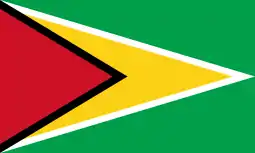

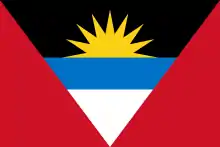
 July 4, 1970: a Cruzeiro do Sul NAMC YS-11 en route from Belém-Val de Cães to Macapá was hijacked by 1 person and flown to Cayenne, Georgetown, Trinidad and Tobago, Antigua and Jamaica.[40]
July 4, 1970: a Cruzeiro do Sul NAMC YS-11 en route from Belém-Val de Cães to Macapá was hijacked by 1 person and flown to Cayenne, Georgetown, Trinidad and Tobago, Antigua and Jamaica.[40]
 August 2, 1970: Pan American World Airways Flight 299 from New York to San Juan was hijacked to Havana with 379 people aboard. This was the first hijacking of a Boeing 747 and the first Boeing 747 to land in Cuba. The captain of the flight was met by Cuban Premier Fidel Castro.[41]
August 2, 1970: Pan American World Airways Flight 299 from New York to San Juan was hijacked to Havana with 379 people aboard. This was the first hijacking of a Boeing 747 and the first Boeing 747 to land in Cuba. The captain of the flight was met by Cuban Premier Fidel Castro.[41]
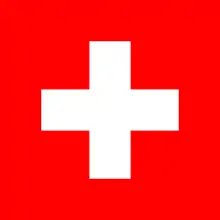
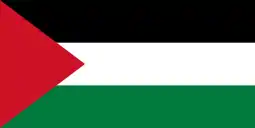 September 6, 1970: As part of the Dawson's Field hijackings by PFLP members, the TWA Flight 741 from Frankfurt (a Boeing 707) and Swissair Flight 100 from Zürich (a Douglas DC-8) were forced to land at Dawson's Field.
September 6, 1970: As part of the Dawson's Field hijackings by PFLP members, the TWA Flight 741 from Frankfurt (a Boeing 707) and Swissair Flight 100 from Zürich (a Douglas DC-8) were forced to land at Dawson's Field.
 September 6, 1970: As part of the Dawson's Field hijackings by PFLP members, the hijacking of El Al Flight 219 from Amsterdam (a Boeing 707) was foiled: hijacker Patrick Argüello was shot and killed, and his partner Leila Khaled was subdued and turned over to British authorities in London.
September 6, 1970: As part of the Dawson's Field hijackings by PFLP members, the hijacking of El Al Flight 219 from Amsterdam (a Boeing 707) was foiled: hijacker Patrick Argüello was shot and killed, and his partner Leila Khaled was subdued and turned over to British authorities in London. September 6, 1970: As part of the Dawson's Field hijackings by PFLP members, two PFLP hijackers who were prevented from boarding the El Al flight, hijacked instead Pan Am Flight 93, a Boeing 747, diverting the large plane first to Beirut and then to Cairo, rather than to the small Jordanian airstrip.
September 6, 1970: As part of the Dawson's Field hijackings by PFLP members, two PFLP hijackers who were prevented from boarding the El Al flight, hijacked instead Pan Am Flight 93, a Boeing 747, diverting the large plane first to Beirut and then to Cairo, rather than to the small Jordanian airstrip. September 9, 1970: As part of the Dawson's Field hijackings by PFLP members, BOAC Flight 775, a Vickers VC10 coming from Bahrain, was hijacked by a PFLP sympathizer and brought to Dawson's Field in order to pressure the British to free Leila Khaled.
September 9, 1970: As part of the Dawson's Field hijackings by PFLP members, BOAC Flight 775, a Vickers VC10 coming from Bahrain, was hijacked by a PFLP sympathizer and brought to Dawson's Field in order to pressure the British to free Leila Khaled. October 15, 1970: Aeroflot Flight 244 was hijacked from Batumi, Adjar ASSR, Georgian SSR, to Trabzon, Turkey by a Lithuanian national and his son. An air hostess was killed and some other crew were injured in a shootout. The hijackers later received American citizenship.
October 15, 1970: Aeroflot Flight 244 was hijacked from Batumi, Adjar ASSR, Georgian SSR, to Trabzon, Turkey by a Lithuanian national and his son. An air hostess was killed and some other crew were injured in a shootout. The hijackers later received American citizenship. June 4, 1971—Glen Elmo Riggs, 58 years old, a retired coal miner from Ashford, W. Va. hijacked a United Airlines 737 jet and demanded to be flown to Israel. He was captured at Dulles International Airport when the flight engineer, acting on the advice of a psychiatrist in the control tower, talked the hijacker into giving up his pistol. The crew convinced him that the short‐haul, two‐engine 737 was incapable of such a long flight and landed their craft at Dulles—exactly one year after a gunfight ended another attempted hijacking.
June 4, 1971—Glen Elmo Riggs, 58 years old, a retired coal miner from Ashford, W. Va. hijacked a United Airlines 737 jet and demanded to be flown to Israel. He was captured at Dulles International Airport when the flight engineer, acting on the advice of a psychiatrist in the control tower, talked the hijacker into giving up his pistol. The crew convinced him that the short‐haul, two‐engine 737 was incapable of such a long flight and landed their craft at Dulles—exactly one year after a gunfight ended another attempted hijacking.
 January 30, 1971: Indian Airlines Fokker F27 on scheduled Srinagar-Jammu flight is hijacked to Lahore by two self-proclaimed Kashmir Separatists. All passengers were released by February 2 and repatriated to India, but the aircraft was blown-up, leading to an India-Pakistan air-travel ban, and suspension of overflight rights until 1976.
January 30, 1971: Indian Airlines Fokker F27 on scheduled Srinagar-Jammu flight is hijacked to Lahore by two self-proclaimed Kashmir Separatists. All passengers were released by February 2 and repatriated to India, but the aircraft was blown-up, leading to an India-Pakistan air-travel ban, and suspension of overflight rights until 1976..svg.png.webp)
 March 30, 1971: Philippine Airlines flight was hijacked in March 1971 by six students from the Mindanao State University, opposed to the Marcos government. The plane landed in Guangzhou (Canton) in southern China, and the Chinese authorities let the students stay in the country. The plane was then allowed to fly back to the Philippines. No one was hurt.
March 30, 1971: Philippine Airlines flight was hijacked in March 1971 by six students from the Mindanao State University, opposed to the Marcos government. The plane landed in Guangzhou (Canton) in southern China, and the Chinese authorities let the students stay in the country. The plane was then allowed to fly back to the Philippines. No one was hurt..svg.png.webp)

 May 17, 1971: an IL-14 with 4 staff members and 16 passengers was hijacked by 6 men at the Oradea Airport (Romania), then forced to fly to Budapest (Hungary), then Vienna (Austria). The passengers and the crew were released in Vienna, while the hijackers flew to West Germany.[42]
May 17, 1971: an IL-14 with 4 staff members and 16 passengers was hijacked by 6 men at the Oradea Airport (Romania), then forced to fly to Budapest (Hungary), then Vienna (Austria). The passengers and the crew were released in Vienna, while the hijackers flew to West Germany.[42]


.svg.png.webp)
 July 2, 1971: Braniff Flight 14, a Boeing 707 flying from Acapulco to New York with 102 passengers and a crew of eight was hijacked on approach to a refueling stop in San Antonio, Texas. The ordeal lasted 43 hours across Texas, Mexico, Peru, Brazil and ended happily in Argentina. After a refueling stop in Monterrey, the hijackers released flight attendants Jeanette Eatman Crepps, Iris Kay Williams and Anita Bankert Mayer and all of the passengers. The remaining crew of Captain Dale Bessant, Bill Wallace, Phillip Wray and flight attendants Ernestina Garcia and Margaret Susan Harris flew on to Lima. The hijackers, a U.S. Navy deserter named Robert Jackson and his Guatemalan lady friend, demanded and got a ransom of $100,000 and wanted to go to Algeria. The Bessant crew was released, one by one, and replaced by a volunteer crew of Captain Al Schroeder, Bill Mizell, Bob Williams, and Navigator Ken McWhorter. Two Lima based employees, Delia Arizola and Clorinda Ontaneda, volunteered to board the flight. Clorinda had been attending college classes, something she did regularly during her off days from flying. Delia had been retired 6 months but still offered her services. The 707 left for Rio and planned to refuel, but the hijacker forced them on to Buenos Aires. The long flight and fatigue took its toll, and the hijackers gave up. It was a record for long-distance hijacking, over 7,500 miles.[43][44]
July 2, 1971: Braniff Flight 14, a Boeing 707 flying from Acapulco to New York with 102 passengers and a crew of eight was hijacked on approach to a refueling stop in San Antonio, Texas. The ordeal lasted 43 hours across Texas, Mexico, Peru, Brazil and ended happily in Argentina. After a refueling stop in Monterrey, the hijackers released flight attendants Jeanette Eatman Crepps, Iris Kay Williams and Anita Bankert Mayer and all of the passengers. The remaining crew of Captain Dale Bessant, Bill Wallace, Phillip Wray and flight attendants Ernestina Garcia and Margaret Susan Harris flew on to Lima. The hijackers, a U.S. Navy deserter named Robert Jackson and his Guatemalan lady friend, demanded and got a ransom of $100,000 and wanted to go to Algeria. The Bessant crew was released, one by one, and replaced by a volunteer crew of Captain Al Schroeder, Bill Mizell, Bob Williams, and Navigator Ken McWhorter. Two Lima based employees, Delia Arizola and Clorinda Ontaneda, volunteered to board the flight. Clorinda had been attending college classes, something she did regularly during her off days from flying. Delia had been retired 6 months but still offered her services. The 707 left for Rio and planned to refuel, but the hijacker forced them on to Buenos Aires. The long flight and fatigue took its toll, and the hijackers gave up. It was a record for long-distance hijacking, over 7,500 miles.[43][44]
.svg.png.webp) August 20, 1971: A Pakistan Air Force T-33 trainer was hijacked during the Bangladesh Liberation War (before Indo-Pakistani war of 1971) in Karachi when a Bengali instructor pilot, Flight Lieutenant Matiur Rahman, knocked out the young Pilot Officer Rashid Minhas with the intention to join Mukti Bahini in the Bangladesh Liberation War. On regaining consciousness in mid-flight, Rashid Minhas struggled for flight control as well as relaying the news of his hijack to the PAF base. In the end of the ensuing struggle he succeeded in crashing his aircraft into the ground near Thatta after seeing no way to prevent the hijack and the defection. He was posthumously awarded Pakistan's highest military award Nishan-e-Haider (Sign of the Lion) for his act of bravery.[45][46][47][48][49] For his attempt to defect from the Pakistan Air Force to join Bangladesh Liberation War, Matiur Rahman was decorated with the Bir Sreshtho award by Bangladesh which is their highest honor given.
August 20, 1971: A Pakistan Air Force T-33 trainer was hijacked during the Bangladesh Liberation War (before Indo-Pakistani war of 1971) in Karachi when a Bengali instructor pilot, Flight Lieutenant Matiur Rahman, knocked out the young Pilot Officer Rashid Minhas with the intention to join Mukti Bahini in the Bangladesh Liberation War. On regaining consciousness in mid-flight, Rashid Minhas struggled for flight control as well as relaying the news of his hijack to the PAF base. In the end of the ensuing struggle he succeeded in crashing his aircraft into the ground near Thatta after seeing no way to prevent the hijack and the defection. He was posthumously awarded Pakistan's highest military award Nishan-e-Haider (Sign of the Lion) for his act of bravery.[45][46][47][48][49] For his attempt to defect from the Pakistan Air Force to join Bangladesh Liberation War, Matiur Rahman was decorated with the Bir Sreshtho award by Bangladesh which is their highest honor given.
 November 8, 1971: Charles Hill, Ralph Lawernce, and Albert Finney were driving a carload of weapons to Louisiana as part of the Republic of New Afrika militant group. They murdered New Mexico State Police officer Robert Rosenbloom during a traffic stop and escaped to Albuquerque where they hijacked a TWA 727 to Cuba.[50][51]
November 8, 1971: Charles Hill, Ralph Lawernce, and Albert Finney were driving a carload of weapons to Louisiana as part of the Republic of New Afrika militant group. They murdered New Mexico State Police officer Robert Rosenbloom during a traffic stop and escaped to Albuquerque where they hijacked a TWA 727 to Cuba.[50][51].svg.png.webp)
 November 12, 1971: Air Canada Flight 812, a commercial DC-8 aircraft en route from Vancouver to Montreal, was hijacked as it approached Regina, Saskatchewan. The hijacker, Paul Cini, was armed with a shotgun and two bundles of dynamite. He then held the plane hostage for a ransom of CAN $1 million and forced the crew to land in Great Falls, Montana. Stewardess Mary Dohey, who had been attempting to reason with Cini for the duration of the flight, managed to persuade him to release the flight's 118 passengers and some crew members. Shortly after, the remaining crew on board managed to overpower the hijacker, ending the 8 hour ordeal. For her actions during the hijacking, Dohey was presented with the Cross of Valour, Canada's highest civilian decoration for bravery. She was the first living person to receive the honour.[52][53][54]
November 12, 1971: Air Canada Flight 812, a commercial DC-8 aircraft en route from Vancouver to Montreal, was hijacked as it approached Regina, Saskatchewan. The hijacker, Paul Cini, was armed with a shotgun and two bundles of dynamite. He then held the plane hostage for a ransom of CAN $1 million and forced the crew to land in Great Falls, Montana. Stewardess Mary Dohey, who had been attempting to reason with Cini for the duration of the flight, managed to persuade him to release the flight's 118 passengers and some crew members. Shortly after, the remaining crew on board managed to overpower the hijacker, ending the 8 hour ordeal. For her actions during the hijacking, Dohey was presented with the Cross of Valour, Canada's highest civilian decoration for bravery. She was the first living person to receive the honour.[52][53][54] November 24, 1971: A man who became known as D. B. Cooper hijacked Northwest Orient Airlines Flight 305, a Boeing 727-100 aircraft flying from Portland, OR, to Seattle, WA, received US$200,000 in ransom, and parachuted from the plane. The actual name of the hijacker remains unknown. The hijacker revealed what appeared to be a bomb to a flight attendant and demanded the ransom and parachutes. The flight landed in Seattle, and FBI agents provided the ransom money and parachutes. Cooper then released all passengers and two flight attendants. After refueling, the aircraft took off again and flew toward Reno, NV. Cooper opened the aft stairs and jumped from the plane with a parachute during a heavy rainstorm. The aircraft was forced to land with the aft stairs deployed. The FBI believes Cooper most likely did not survive, but the case remains unsolved.[55][56][57]
November 24, 1971: A man who became known as D. B. Cooper hijacked Northwest Orient Airlines Flight 305, a Boeing 727-100 aircraft flying from Portland, OR, to Seattle, WA, received US$200,000 in ransom, and parachuted from the plane. The actual name of the hijacker remains unknown. The hijacker revealed what appeared to be a bomb to a flight attendant and demanded the ransom and parachutes. The flight landed in Seattle, and FBI agents provided the ransom money and parachutes. Cooper then released all passengers and two flight attendants. After refueling, the aircraft took off again and flew toward Reno, NV. Cooper opened the aft stairs and jumped from the plane with a parachute during a heavy rainstorm. The aircraft was forced to land with the aft stairs deployed. The FBI believes Cooper most likely did not survive, but the case remains unsolved.[55][56][57].svg.png.webp)
 December 26, 1971: Patrick Critton hijacked an airplane from Thunder Bay, Ontario to Cuba. He was convicted in 2001.
December 26, 1971: Patrick Critton hijacked an airplane from Thunder Bay, Ontario to Cuba. He was convicted in 2001. January 12, 1972: Braniff Flight 38, a Boeing 727, was hijacked by a lone gunman, Billy Gene Hurst, Jr., as it departed Houston, Texas bound for Dallas, Texas. Hurst allowed the other 94 passengers to deplane after landing at Dallas Love Field but continued to hold the 7 crewmembers hostage, demanding to fly to South America and asking for US$2 million, parachutes, and jungle survival gear, amongst other items. After a 6-hour standoff, a package containing some of the items was delivered by Dallas police, and the crew escaped while Hurst was examining it. Police stormed the jetliner shortly afterwards and arrested Hurst without serious incident.[58][59]
January 12, 1972: Braniff Flight 38, a Boeing 727, was hijacked by a lone gunman, Billy Gene Hurst, Jr., as it departed Houston, Texas bound for Dallas, Texas. Hurst allowed the other 94 passengers to deplane after landing at Dallas Love Field but continued to hold the 7 crewmembers hostage, demanding to fly to South America and asking for US$2 million, parachutes, and jungle survival gear, amongst other items. After a 6-hour standoff, a package containing some of the items was delivered by Dallas police, and the crew escaped while Hurst was examining it. Police stormed the jetliner shortly afterwards and arrested Hurst without serious incident.[58][59] January 28, 1972: TWA Flight 2, Los Angeles to New York, was hijacked by con man and bank robber Garrett Trapnell while over Chicago. Trapnell demanded $306,800 in cash (to recoup the loss of a recent court case), the release of Angela Davis (as well as that of a friend of his who was also imprisoned), and clemency from President Richard Nixon. The FBI retook the aircraft during a crew switch at Kennedy Airport; Trapnell was shot and wounded, no one else was hurt. Trapnell's hijacking came after a string of domestic incidents and resulted in an overhaul of flight procedures by the Nixon Administration, procedures that remained in place until the hijackings on September 11, 2001. Trapnell and unrelated hijacker Martin J. McNally (see June 23, 1972, below) attempted to escape Marion federal prison on May 24, 1978, after Trapnell's girlfriend Barbara Ann Oswald hijacked a helicopter and ordered it to Marion but that hijacking ended when the pilot grabbed the woman's gun and killed Oswald. On December 21, 1978, Oswald's 17-year-old daughter Robin Oswald hijacked TWA Flight 541 in another attempt to rescue Trapnell. She surrendered after 10 hours of negotiations at the airport in Marion.
January 28, 1972: TWA Flight 2, Los Angeles to New York, was hijacked by con man and bank robber Garrett Trapnell while over Chicago. Trapnell demanded $306,800 in cash (to recoup the loss of a recent court case), the release of Angela Davis (as well as that of a friend of his who was also imprisoned), and clemency from President Richard Nixon. The FBI retook the aircraft during a crew switch at Kennedy Airport; Trapnell was shot and wounded, no one else was hurt. Trapnell's hijacking came after a string of domestic incidents and resulted in an overhaul of flight procedures by the Nixon Administration, procedures that remained in place until the hijackings on September 11, 2001. Trapnell and unrelated hijacker Martin J. McNally (see June 23, 1972, below) attempted to escape Marion federal prison on May 24, 1978, after Trapnell's girlfriend Barbara Ann Oswald hijacked a helicopter and ordered it to Marion but that hijacking ended when the pilot grabbed the woman's gun and killed Oswald. On December 21, 1978, Oswald's 17-year-old daughter Robin Oswald hijacked TWA Flight 541 in another attempt to rescue Trapnell. She surrendered after 10 hours of negotiations at the airport in Marion.

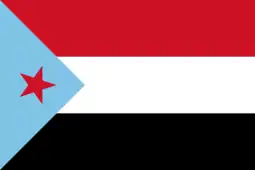 February 22, 1972: Lufthansa Flight 649, a Boeing 747-200 from Tokyo to Frankfurt, is hijacked by a group commandeered by the Popular Front for the Liberation of Palestine (PFLP) during the Delhi-Athens leg and forced to divert to Aden, where all 182 passengers and crew were released on the next day in exchange for a $5 million ransom.[60]
February 22, 1972: Lufthansa Flight 649, a Boeing 747-200 from Tokyo to Frankfurt, is hijacked by a group commandeered by the Popular Front for the Liberation of Palestine (PFLP) during the Delhi-Athens leg and forced to divert to Aden, where all 182 passengers and crew were released on the next day in exchange for a $5 million ransom.[60] April 7, 1972: United Airlines Flight 855, from Newark, New Jersey, to Los Angeles, California, carrying 85 passengers and a crew of six, was hijacked by Richard McCoy Jr. during a stopover in Denver, Colorado. This was a copycat hijacking, modelled on the D.B Cooper 1971 hijacking of Northwest Orient Airlines Flight 305, less than 5 months prior. The aircraft was a Boeing 727 with aft stairs (the same equipment used in the D. B. Cooper incident), via which McCoy escaped in mid-flight by parachute after giving the crew similar instructions to what Cooper had done. McCoy obtained a $500,000 cash ransom, but following fingerprint and handwriting matches, McCoy was arrested two days after the hijacking, convicted and sentenced to jail.
April 7, 1972: United Airlines Flight 855, from Newark, New Jersey, to Los Angeles, California, carrying 85 passengers and a crew of six, was hijacked by Richard McCoy Jr. during a stopover in Denver, Colorado. This was a copycat hijacking, modelled on the D.B Cooper 1971 hijacking of Northwest Orient Airlines Flight 305, less than 5 months prior. The aircraft was a Boeing 727 with aft stairs (the same equipment used in the D. B. Cooper incident), via which McCoy escaped in mid-flight by parachute after giving the crew similar instructions to what Cooper had done. McCoy obtained a $500,000 cash ransom, but following fingerprint and handwriting matches, McCoy was arrested two days after the hijacking, convicted and sentenced to jail.
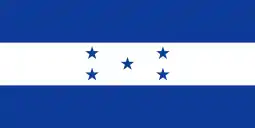 May 5, 1972: Frederick Hahneman hijacked Eastern Airlines Flight 175 en route from Allentown, Pa, to Miami, Fl. After receiving $303,000, 6 parachutes and two cartons of cigarettes he ordered the pilot to fly to Honduras, his birth country, where he parachuted over the jungle and disappeared. A manhunt by the FBI and Honduran police, plus a $25,000 bounty from the airline eventually led to his surrender.[61][62][63]
May 5, 1972: Frederick Hahneman hijacked Eastern Airlines Flight 175 en route from Allentown, Pa, to Miami, Fl. After receiving $303,000, 6 parachutes and two cartons of cigarettes he ordered the pilot to fly to Honduras, his birth country, where he parachuted over the jungle and disappeared. A manhunt by the FBI and Honduran police, plus a $25,000 bounty from the airline eventually led to his surrender.[61][62][63]
 May 8, 1972: Sabena Flight 571
May 8, 1972: Sabena Flight 571.svg.png.webp)
.svg.png.webp)
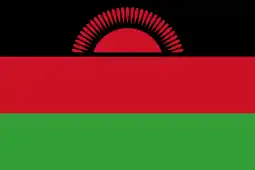 May 24, 1972: A South African Airways Boeing 727 was hijacked between Salisbury, Rhodesia and Johannesburg and flown to Blantyre in Malawi. After all the crew and passengers escaped, the Malawian security forces started shooting at the aircraft with the 2 hijackers still on board. The hijackers surrendered.[64]
May 24, 1972: A South African Airways Boeing 727 was hijacked between Salisbury, Rhodesia and Johannesburg and flown to Blantyre in Malawi. After all the crew and passengers escaped, the Malawian security forces started shooting at the aircraft with the 2 hijackers still on board. The hijackers surrendered.[64]
 June 3, 1972: Western Airlines Flight 701 from Los Angeles to Seattle was hijacked by Willie Roger Holder, a black Vietnam veteran, and Catherine Marie Kerkow, his white girlfriend. The hijackers claimed they had a bomb in an attaché case and demanded $500,000. After allowing all 97 passengers to get off in San Francisco, they flew to Algeria where they were granted political asylum. The Algerian government confiscated and returned $488,000 of the ransom money to US officials.[65][66][67][68]
June 3, 1972: Western Airlines Flight 701 from Los Angeles to Seattle was hijacked by Willie Roger Holder, a black Vietnam veteran, and Catherine Marie Kerkow, his white girlfriend. The hijackers claimed they had a bomb in an attaché case and demanded $500,000. After allowing all 97 passengers to get off in San Francisco, they flew to Algeria where they were granted political asylum. The Algerian government confiscated and returned $488,000 of the ransom money to US officials.[65][66][67][68] June 23, 1972: In the 9th copycat D.B. Cooper-style hijacking Martin J. McNally under the pseudonym of Robert W. Wilson hijacked American Airlines Flight 119, a Boeing 727 bound from St. Louis to Tulsa and demanded $502,500. The plane flew back and forth between Tulsa and St. Louis while the loot was raised. In St. Louis, live news reports about the hijacking prompted David J. Hanley, a 30-year-old businessman, to crash his 1972 Cadillac at 80 mph through two airport fences, travel down the runway at high speed and crash into the nosegear of the plane, which was beginning to taxi. The demolished car lodged under the fuselage and one wing. Hanley suffered multiple injuries and was charged with willfully damaging a civil aircraft. The hijacker transferred to a new 727 and jumped out of the plane over Indiana. The full loot bag and gun were discovered by searchers near Peru, Indiana. Fingerprints led to McNally. While in Marion Federal Prison McNally and fellow inmate and hijacker Garrett Trapnell (see January 28, 1972 above) were involved in an attempted prison escape on May 24, 1978, after Trapnell's girlfriend hijacked a helicopter. The escape attempt ended when the helicopter pilot grabbed the woman's gun and killed her. McNally was paroled from prison January 27, 2010.[69][70]
June 23, 1972: In the 9th copycat D.B. Cooper-style hijacking Martin J. McNally under the pseudonym of Robert W. Wilson hijacked American Airlines Flight 119, a Boeing 727 bound from St. Louis to Tulsa and demanded $502,500. The plane flew back and forth between Tulsa and St. Louis while the loot was raised. In St. Louis, live news reports about the hijacking prompted David J. Hanley, a 30-year-old businessman, to crash his 1972 Cadillac at 80 mph through two airport fences, travel down the runway at high speed and crash into the nosegear of the plane, which was beginning to taxi. The demolished car lodged under the fuselage and one wing. Hanley suffered multiple injuries and was charged with willfully damaging a civil aircraft. The hijacker transferred to a new 727 and jumped out of the plane over Indiana. The full loot bag and gun were discovered by searchers near Peru, Indiana. Fingerprints led to McNally. While in Marion Federal Prison McNally and fellow inmate and hijacker Garrett Trapnell (see January 28, 1972 above) were involved in an attempted prison escape on May 24, 1978, after Trapnell's girlfriend hijacked a helicopter. The escape attempt ended when the helicopter pilot grabbed the woman's gun and killed her. McNally was paroled from prison January 27, 2010.[69][70] July 2, 1972: Pan Am Flight 841 was a commercial passenger flight of a Boeing 747 from San Francisco, California to Saigon, South Vietnam which was hijacked over the South China Sea on 2 July 1972, ostensibly as an act of protest concerning US involvement in the Vietnam War as well as the expulsion from the United States of the South Vietnamese hijacker, a recent graduate of a US university. The hijacking ended when the captain and passengers overcame and killed the lone hijacker after the plane landed in Saigon.
July 2, 1972: Pan Am Flight 841 was a commercial passenger flight of a Boeing 747 from San Francisco, California to Saigon, South Vietnam which was hijacked over the South China Sea on 2 July 1972, ostensibly as an act of protest concerning US involvement in the Vietnam War as well as the expulsion from the United States of the South Vietnamese hijacker, a recent graduate of a US university. The hijacking ended when the captain and passengers overcame and killed the lone hijacker after the plane landed in Saigon. July 5, 1972: Pacific Southwest Airlines Flight 710 was hijacked by two Bulgarian immigrants shortly after take-off from Sacramento, California en route to San Francisco. The hijackers demanded $800,000, two parachutes and to be flown to the Soviet Union. The hijacking ended on the runway in San Francisco when agents from the Federal Bureau of Investigation stormed the plane killing both hijackers and one passenger. Two other passengers were wounded. These were the first passengers killed and wounded in a skyjacking in the United States.[71]
July 5, 1972: Pacific Southwest Airlines Flight 710 was hijacked by two Bulgarian immigrants shortly after take-off from Sacramento, California en route to San Francisco. The hijackers demanded $800,000, two parachutes and to be flown to the Soviet Union. The hijacking ended on the runway in San Francisco when agents from the Federal Bureau of Investigation stormed the plane killing both hijackers and one passenger. Two other passengers were wounded. These were the first passengers killed and wounded in a skyjacking in the United States.[71]
 July 31, 1972: Delta Airlines Flight 841 was hijacked by five members of the Black Liberation Army including the elusive George Wright. The flight was originally from Detroit to Miami. The hijackers exchanged the passengers for $1 million in Miami and forced the plane to fly to Boston, then to Algeria, who returned the plane and cash but released the hijackers.[72][73][74]
July 31, 1972: Delta Airlines Flight 841 was hijacked by five members of the Black Liberation Army including the elusive George Wright. The flight was originally from Detroit to Miami. The hijackers exchanged the passengers for $1 million in Miami and forced the plane to fly to Boston, then to Algeria, who returned the plane and cash but released the hijackers.[72][73][74]
.svg.png.webp) September 15, 1972: Scandinavian Airlines System Flight 130, a DC 9 – Gunder Viking – with registration number LN-RLO en route from Torslanda, Gothenburg, Sweden, to Stockholm, Sweden, was hijacked five minutes after take off by three armed Croatians connected to Ustasa. The plane was ordered to land at Bulltofta airport, Malmö, Sweden. 86 passengers and 4 crew members were held hostage until the next morning when the hostages were released in exchange for 500,000 Swedish Kronor and seven Croatians imprisoned in Sweden. The last passenger left the plane unharmed after 16 hours. The plane and crew was then ordered to fly to Madrid, Spain, where the hijackers later were to be put on trial.
September 15, 1972: Scandinavian Airlines System Flight 130, a DC 9 – Gunder Viking – with registration number LN-RLO en route from Torslanda, Gothenburg, Sweden, to Stockholm, Sweden, was hijacked five minutes after take off by three armed Croatians connected to Ustasa. The plane was ordered to land at Bulltofta airport, Malmö, Sweden. 86 passengers and 4 crew members were held hostage until the next morning when the hostages were released in exchange for 500,000 Swedish Kronor and seven Croatians imprisoned in Sweden. The last passenger left the plane unharmed after 16 hours. The plane and crew was then ordered to fly to Madrid, Spain, where the hijackers later were to be put on trial.

.svg.png.webp)
.svg.png.webp) October 29, 1972: Lufthansa Flight 615, a Boeing 727, from Beirut to Frankfurt, piloted by capt. Walter Claussen, was hijacked by three men and flown to Zagreb, asking for liberation of the three surviving perpetrators of the Munich Massacre on 5 September that year. After boarding the three liberated men, the plane was redirected to Tripoli in Libya where all hostages were finally released.[75][76]
October 29, 1972: Lufthansa Flight 615, a Boeing 727, from Beirut to Frankfurt, piloted by capt. Walter Claussen, was hijacked by three men and flown to Zagreb, asking for liberation of the three surviving perpetrators of the Munich Massacre on 5 September that year. After boarding the three liberated men, the plane was redirected to Tripoli in Libya where all hostages were finally released.[75][76]
.svg.png.webp)
 November 10, 1972: Southern Airways Flight 49, was hijacked by three men and flown to multiple locations in the United States, and one Canadian city. At one point, the hijackers threatened to fly the plane into the nuclear reactor at the Oak Ridge National Laboratory, if their demands for $10 million in cash were not met. While stopped for refueling at McCoy Air Force Base, Orlando, the FBI shot out the plane's tires, prompting the hijackers to force pilot William Haas to take off. The hijacking came to an end when the plane landed on a partially foam-covered runway in Havana, Cuba, and the hijackers were captured after attempting to escape.
November 10, 1972: Southern Airways Flight 49, was hijacked by three men and flown to multiple locations in the United States, and one Canadian city. At one point, the hijackers threatened to fly the plane into the nuclear reactor at the Oak Ridge National Laboratory, if their demands for $10 million in cash were not met. While stopped for refueling at McCoy Air Force Base, Orlando, the FBI shot out the plane's tires, prompting the hijackers to force pilot William Haas to take off. The hijacking came to an end when the plane landed on a partially foam-covered runway in Havana, Cuba, and the hijackers were captured after attempting to escape..svg.png.webp) December 14, 1972: Quebecair Flight 321 en route to Toronto was hijacked by Larry Maxwell Stanford and diverted to Montreal where the hijacker surrendered.[77]
December 14, 1972: Quebecair Flight 321 en route to Toronto was hijacked by Larry Maxwell Stanford and diverted to Montreal where the hijacker surrendered.[77] April 24, 1973: The hijacking attempt of Aeroflot Tu-104 flying from Leningrad to Moscow. When a flight attendant tried to disarm the hijacker, the bomb detonated, killing both and causing decompression. The crew made an emergency landing in Leningrad; the plane was written off.[78]
April 24, 1973: The hijacking attempt of Aeroflot Tu-104 flying from Leningrad to Moscow. When a flight attendant tried to disarm the hijacker, the bomb detonated, killing both and causing decompression. The crew made an emergency landing in Leningrad; the plane was written off.[78] May 18, 1973: Another hijacking attempt of Aeroflot Tu-104 flying from Irkutsk to Chita. The hijacker demanded the plane be diverted to China. The bomb detonated and the plane crashed near Lake Baikal, killing all 82 people on board.[79]
May 18, 1973: Another hijacking attempt of Aeroflot Tu-104 flying from Irkutsk to Chita. The hijacker demanded the plane be diverted to China. The bomb detonated and the plane crashed near Lake Baikal, killing all 82 people on board.[79] June 10, 1973: 1973 Nepal plane hijack
June 10, 1973: 1973 Nepal plane hijack.svg.png.webp)
.svg.png.webp)
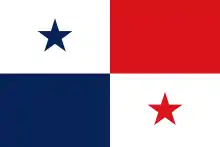

 May 18, 1973: Domestic flight of a two-engine Convair aircraft with 32 passengers to Caracas, Venezuela hijacked between Valera and Barquisimeto. Three male and one female hijackers linked to the leftist group "Punto Cero" demanded the release of 79 "political prisoners" from Venezuelan prisons. Diverting the plane via Curacao in the Dutch Antilles and Panama, where three passengers were released, to Mérida, Yucatán and Mexico City, where they issued an ultimatum. Mediation by a Mexican official resulted in continuation of the voyage back to Mérida, where the threat was reduced to blowing up the plane upon arrival in Cuba and release of the hostages. Aircraft continued to Havana, Cuba, where the hijackers and the Mexican negotiator left the aircraft. The aircraft then returned to Maiquetía, Venezuela with the remaining passengers.[80]
May 18, 1973: Domestic flight of a two-engine Convair aircraft with 32 passengers to Caracas, Venezuela hijacked between Valera and Barquisimeto. Three male and one female hijackers linked to the leftist group "Punto Cero" demanded the release of 79 "political prisoners" from Venezuelan prisons. Diverting the plane via Curacao in the Dutch Antilles and Panama, where three passengers were released, to Mérida, Yucatán and Mexico City, where they issued an ultimatum. Mediation by a Mexican official resulted in continuation of the voyage back to Mérida, where the threat was reduced to blowing up the plane upon arrival in Cuba and release of the hostages. Aircraft continued to Havana, Cuba, where the hijackers and the Mexican negotiator left the aircraft. The aircraft then returned to Maiquetía, Venezuela with the remaining passengers.[80] July 20, 1973: Japan Airlines Flight 404
July 20, 1973: Japan Airlines Flight 404 October 31, 1973: The Mountjoy Prison helicopter escape, in which three members of the Provisional Irish Republican Army (IRA) were allowed to escape from Mountjoy Prison in Dublin, Ireland aboard a hijacked light helicopter; prison guards initially presumed the vehicle was carrying government officials.
October 31, 1973: The Mountjoy Prison helicopter escape, in which three members of the Provisional Irish Republican Army (IRA) were allowed to escape from Mountjoy Prison in Dublin, Ireland aboard a hijacked light helicopter; prison guards initially presumed the vehicle was carrying government officials.

 November 25, 1973: A KLM Boeing 747, "Mississippi", was hijacked by three young Arabs over Iraqi airspace on a scheduled Amsterdam-Tokyo flight with 247 passengers on board. After the hijackers threatened to blow up the plane when no country would grant landing permission, the plane landed in Malta. Most of the passengers and the eight stewardesses were released after negotiations with the Maltese PM Dom Mintoff who argued with the hijackers that the plane could not possibly take off with both the passengers and the 27,000 gallons of fuel they had demanded given the (then) short runway. With 11 passengers on board the jumbo jet left Malta to Dubai where the incident ended without fatalities.[81]
November 25, 1973: A KLM Boeing 747, "Mississippi", was hijacked by three young Arabs over Iraqi airspace on a scheduled Amsterdam-Tokyo flight with 247 passengers on board. After the hijackers threatened to blow up the plane when no country would grant landing permission, the plane landed in Malta. Most of the passengers and the eight stewardesses were released after negotiations with the Maltese PM Dom Mintoff who argued with the hijackers that the plane could not possibly take off with both the passengers and the 27,000 gallons of fuel they had demanded given the (then) short runway. With 11 passengers on board the jumbo jet left Malta to Dubai where the incident ended without fatalities.[81] December 17, 1973: 1973 Rome airport attacks and hijacking
December 17, 1973: 1973 Rome airport attacks and hijacking February 22, 1974: At Baltimore/Washington International Airport Samuel Byck shot and killed Maryland Aviation Administration Police Officer George Neal Ramsburg before storming Delta Airlines Flight 523 to Atlanta. When informed by pilots Reese (Doug) Loftin and Fred Jones they could not take off until wheel blocks were removed, he shot them both and grabbed a nearby passenger, ordering her to "fly the plane." Jones died as he was being removed from the aircraft after the event was concluded; Byck was mortally wounded when Charles Troyer, an Anne Arundel County police officer on the jetway, stormed the plane and fired four shots through the aircraft door at Byck with a .357 Magnum revolver taken from the deceased Ramsburg. Two of the shots penetrated the thick window of the aircraft door and wounded Byck. Before the police could gain entry to the aircraft, Byck committed suicide by shooting himself in the head. Byck's motive was to hijack the aircraft and crash it into the White House, in an assassination attempt on President Richard Nixon.[82][83]
February 22, 1974: At Baltimore/Washington International Airport Samuel Byck shot and killed Maryland Aviation Administration Police Officer George Neal Ramsburg before storming Delta Airlines Flight 523 to Atlanta. When informed by pilots Reese (Doug) Loftin and Fred Jones they could not take off until wheel blocks were removed, he shot them both and grabbed a nearby passenger, ordering her to "fly the plane." Jones died as he was being removed from the aircraft after the event was concluded; Byck was mortally wounded when Charles Troyer, an Anne Arundel County police officer on the jetway, stormed the plane and fired four shots through the aircraft door at Byck with a .357 Magnum revolver taken from the deceased Ramsburg. Two of the shots penetrated the thick window of the aircraft door and wounded Byck. Before the police could gain entry to the aircraft, Byck committed suicide by shooting himself in the head. Byck's motive was to hijack the aircraft and crash it into the White House, in an assassination attempt on President Richard Nixon.[82][83]
.svg.png.webp) September 4, 1975: A group of 44 civilians, including armed supporters of the Timorese Democratic Union (UDT), commandeered a Royal Australian Air Force (RAAF) Caribou, A4-140, on the ground at Baucau Airport in the then Portuguese Timor, which was in the middle of a civil war. The Caribou had landed at Baucau on a humanitarian mission for the International Committee of the Red Cross. The civilians demanded that the RAAF crew members fly them to Darwin Airport (also RAAF Base Darwin) in Australia, which they did. After the Caribou arrived there, the Australian government detained the civilians for a short period, and then granted refugee visas to all of them. The Guardian later described A4-140 as "the only RAAF plane ever hijacked", and the incident as "one of the more remarkable stories in Australia’s military and immigration history".[84]
September 4, 1975: A group of 44 civilians, including armed supporters of the Timorese Democratic Union (UDT), commandeered a Royal Australian Air Force (RAAF) Caribou, A4-140, on the ground at Baucau Airport in the then Portuguese Timor, which was in the middle of a civil war. The Caribou had landed at Baucau on a humanitarian mission for the International Committee of the Red Cross. The civilians demanded that the RAAF crew members fly them to Darwin Airport (also RAAF Base Darwin) in Australia, which they did. After the Caribou arrived there, the Australian government detained the civilians for a short period, and then granted refugee visas to all of them. The Guardian later described A4-140 as "the only RAAF plane ever hijacked", and the incident as "one of the more remarkable stories in Australia’s military and immigration history".[84] October 5, 1975: Aerolíneas Argentinas Flight 706 was hijacked by a Montoneros platoon as part of Operation Primicia. The plane was diverted to Formosa airport, where all of its passengers and crew were released and the hijackers took off with a few FN FAL rifles they had taken during a simultaneous assault on an Argentine Army base. The aircraft landed in a crop field Rafaela, Santa Fe province and the guerrillas made a hasty retreat in cars that had been waiting at the improvised airstrip.
October 5, 1975: Aerolíneas Argentinas Flight 706 was hijacked by a Montoneros platoon as part of Operation Primicia. The plane was diverted to Formosa airport, where all of its passengers and crew were released and the hijackers took off with a few FN FAL rifles they had taken during a simultaneous assault on an Argentine Army base. The aircraft landed in a crop field Rafaela, Santa Fe province and the guerrillas made a hasty retreat in cars that had been waiting at the improvised airstrip.

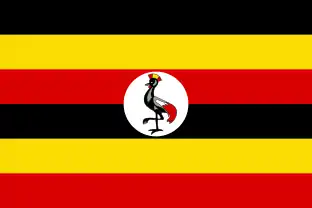 June 27, 1976: The hijack of Air France Flight 139 on June 27, 1976, by members of the militant organizations Revolutionary Cells and the Popular Front for the Liberation of Palestine – External Operations was brought to an end on July 4 at Entebbe Airport, Uganda by Operation Entebbe: Israeli commandos assaulted the building holding the hijackers and hostages, killing all Palestinian hijackers and rescuing 105 persons, almost all Israeli hostages. However, three passengers and one commando were killed.
June 27, 1976: The hijack of Air France Flight 139 on June 27, 1976, by members of the militant organizations Revolutionary Cells and the Popular Front for the Liberation of Palestine – External Operations was brought to an end on July 4 at Entebbe Airport, Uganda by Operation Entebbe: Israeli commandos assaulted the building holding the hijackers and hostages, killing all Palestinian hijackers and rescuing 105 persons, almost all Israeli hostages. However, three passengers and one commando were killed.
.svg.png.webp)

 September 10, 1976: TWA Flight 355 was hijacked by Croatian separatists. Some passengers were allowed to deplane in Canada before the hijackers continued on to Iceland, then France, where they released the remaining passengers and surrendered to authorities. One New York police officer was killed while working on a bomb which the hijackers had planted at Grand Central Station.
September 10, 1976: TWA Flight 355 was hijacked by Croatian separatists. Some passengers were allowed to deplane in Canada before the hijackers continued on to Iceland, then France, where they released the remaining passengers and surrendered to authorities. One New York police officer was killed while working on a bomb which the hijackers had planted at Grand Central Station.
 July 10, 1977: Two gunmen hijack a domestic Soviet flight with the intention of flying to Sweden, but are forced to land in Finland due to lack of fuel. They would eventually surrender and be extradited back to the Soviet Union.
July 10, 1977: Two gunmen hijack a domestic Soviet flight with the intention of flying to Sweden, but are forced to land in Finland due to lack of fuel. They would eventually surrender and be extradited back to the Soviet Union.
 September 28, 1977: Japan Airlines Flight 472 was being hijacked by the Japanese Red Army (JRA). The JRA hijacked the plane over India and forced it to land in Dhaka, Bangladesh. The Japanese Government freed six imprisoned members of the group and allegedly paid a $6M ransom.
September 28, 1977: Japan Airlines Flight 472 was being hijacked by the Japanese Red Army (JRA). The JRA hijacked the plane over India and forced it to land in Dhaka, Bangladesh. The Japanese Government freed six imprisoned members of the group and allegedly paid a $6M ransom..svg.png.webp)


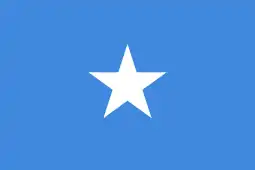 October 13, 1977: Lufthansa Flight 181 (also known as the Landshut) was hijacked by Palestinian hijackers on a flight from Palma de Mallorca to Frankfurt. The ordeal ended in Mogadishu, Somalia when GSG 9 commandos stormed the plane. Three hijackers were killed and 86 hostages were freed. The pilot was killed before the raid. The hand of West Germany's Red Army Faction was suspected.
October 13, 1977: Lufthansa Flight 181 (also known as the Landshut) was hijacked by Palestinian hijackers on a flight from Palma de Mallorca to Frankfurt. The ordeal ended in Mogadishu, Somalia when GSG 9 commandos stormed the plane. Three hijackers were killed and 86 hostages were freed. The pilot was killed before the raid. The hand of West Germany's Red Army Faction was suspected.
 December 4, 1977: Suspected lone member of Japanese Red Army hijacked Malaysian Airline System Flight 653. The Boeing 737 then crashed after he shot both pilots and himself. All 100 people on board died.
December 4, 1977: Suspected lone member of Japanese Red Army hijacked Malaysian Airline System Flight 653. The Boeing 737 then crashed after he shot both pilots and himself. All 100 people on board died. March 13, 1978: United Flight 696 was hijacked by Clay Thomas immediately after takeoff out of San Francisco International Airport. The aircraft landed in Oakland and the release of cabin crew and passengers was negotiated by the flight crew. The fueling was cut short by the hijacker and Flt 696 took off only partially refueled. Flight 696 landed in Denver to take on more fuel for Cuba. While waiting for the fuel, the cockpit crew jumped from the cockpit to escape the hijacker. The hijacker surrendered to the FBI within minutes of the crew's escape. No fatalities but the three cockpit crew-members suffered fractures and torn cartilage from the two-story leap.
March 13, 1978: United Flight 696 was hijacked by Clay Thomas immediately after takeoff out of San Francisco International Airport. The aircraft landed in Oakland and the release of cabin crew and passengers was negotiated by the flight crew. The fueling was cut short by the hijacker and Flt 696 took off only partially refueled. Flight 696 landed in Denver to take on more fuel for Cuba. While waiting for the fuel, the cockpit crew jumped from the cockpit to escape the hijacker. The hijacker surrendered to the FBI within minutes of the crew's escape. No fatalities but the three cockpit crew-members suffered fractures and torn cartilage from the two-story leap. August 25, 1978: TWA Flight 830 was hijacked by an unknown hijacker, who hid among the passengers. The hijacker delivered detailed instructions to the pilot, but all passengers (including the daughter of a US Ambassador) along with the crew managed to simply disembark at their destination without incident.[85]
August 25, 1978: TWA Flight 830 was hijacked by an unknown hijacker, who hid among the passengers. The hijacker delivered detailed instructions to the pilot, but all passengers (including the daughter of a US Ambassador) along with the crew managed to simply disembark at their destination without incident.[85]
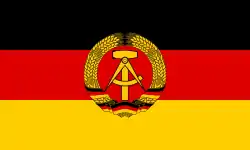
 August 30, 1978: LOT Polish Airlines Flight 165 was hijacked by two East Germans in order to escape to West Berlin. There were no casualties, the hijackers surrendered and were tried by never-before-convened United States Court for Berlin.
August 30, 1978: LOT Polish Airlines Flight 165 was hijacked by two East Germans in order to escape to West Berlin. There were no casualties, the hijackers surrendered and were tried by never-before-convened United States Court for Berlin. September 30, 1978: Finnair Flight 405[86] was hijacked by Aarno Lamminparras; the flight was en route from Oulu to Helsinki. He requested a ransom of 675,000 markkas, which he received, and as a result he released all 44 passengers on board. Then he ordered the plane to fly him to Amsterdam in the Netherlands and then back to Oulu. He returned home and was arrested there the next day. He served seven years and one month in prison and now lives in Sweden.[87] One of the passengers on board the hijacked plane was singer Monica Aspelund.[86]
September 30, 1978: Finnair Flight 405[86] was hijacked by Aarno Lamminparras; the flight was en route from Oulu to Helsinki. He requested a ransom of 675,000 markkas, which he received, and as a result he released all 44 passengers on board. Then he ordered the plane to fly him to Amsterdam in the Netherlands and then back to Oulu. He returned home and was arrested there the next day. He served seven years and one month in prison and now lives in Sweden.[87] One of the passengers on board the hijacked plane was singer Monica Aspelund.[86] December 20, 1978: Devendra Nath Pandey and Bhola Nath Pandey hijacked Indian Airlines flight IC-410. They demanded the immediate release of Indian National Congress party leader Indira Gandhi who was imprisoned at that time on the charges of fraud and misconduct. Later, they were awarded with party tickets for this act by the Indira Gandhi government in 1980 such that Devendra Nath Pandey rose to become a minister in the government of most populous state of India, Uttar Pradesh. This case was also mentioned by Jarnail Singh Bhindrawale to justify his claim regarding the hypocrisy of the Indian government.[88]
December 20, 1978: Devendra Nath Pandey and Bhola Nath Pandey hijacked Indian Airlines flight IC-410. They demanded the immediate release of Indian National Congress party leader Indira Gandhi who was imprisoned at that time on the charges of fraud and misconduct. Later, they were awarded with party tickets for this act by the Indira Gandhi government in 1980 such that Devendra Nath Pandey rose to become a minister in the government of most populous state of India, Uttar Pradesh. This case was also mentioned by Jarnail Singh Bhindrawale to justify his claim regarding the hypocrisy of the Indian government.[88] December 21, 1978: 17-year-old Robin Oswald hijacked TWA Flight 541 flying from Louisville to Kansas City claiming she had three sticks of dynamite. The plane landed at Williamson County Regional Airport where she hoped to seek the release of Garrett Trapnell who was serving time at Marion Federal Penitentiary. Trapnell was serving time for a January 28, 1972 hijacking (see January 28, 1972 above). On May 24, 1978 her mother Barbara Ann Oswald was killed after hijacking a helicopter in an attempt to rescue Trapnell. Robin eventually surrendered at the Williamson Airport. The dynamite was revealed to be flares.[89]
December 21, 1978: 17-year-old Robin Oswald hijacked TWA Flight 541 flying from Louisville to Kansas City claiming she had three sticks of dynamite. The plane landed at Williamson County Regional Airport where she hoped to seek the release of Garrett Trapnell who was serving time at Marion Federal Penitentiary. Trapnell was serving time for a January 28, 1972 hijacking (see January 28, 1972 above). On May 24, 1978 her mother Barbara Ann Oswald was killed after hijacking a helicopter in an attempt to rescue Trapnell. Robin eventually surrendered at the Williamson Airport. The dynamite was revealed to be flares.[89].svg.png.webp) April 4, 1979: Domico Speranza, an Italian national, attempted to hijack a Boeing 747SP operating Pan American World Airways Flight 815, taking a young woman hostage and boarding the emptied aircraft at a gate of Sydney Airport's international terminal. Police rescued the hostage but initially failed to subdue Speranza. Hours later, police stormed the aircraft and shot him in the shoulder and forehead. Speranza died at the hospital later that evening from his injuries.[90][91]
April 4, 1979: Domico Speranza, an Italian national, attempted to hijack a Boeing 747SP operating Pan American World Airways Flight 815, taking a young woman hostage and boarding the emptied aircraft at a gate of Sydney Airport's international terminal. Police rescued the hostage but initially failed to subdue Speranza. Hours later, police stormed the aircraft and shot him in the shoulder and forehead. Speranza died at the hospital later that evening from his injuries.[90][91]- June 12, 1979 A Delta Airlines wide‐bodied jetliner carrying 207 passengers and crew members on a flight from New York to Fort Lauderdale, Fla., was diverted to Cuba by a hijacker.

 June 20, 1979: Nikola Kavaja, a Serbian nationalist and anti-communist hijacked American Airlines Flight 293. During the hijacking, Kavaja demanded and received another airplane with the intent of crashing it into the headquarters of the Yugoslav Communist Party. His lawyer convinced him to surrender after landing at Shannon Airport, Ireland.[92]
June 20, 1979: Nikola Kavaja, a Serbian nationalist and anti-communist hijacked American Airlines Flight 293. During the hijacking, Kavaja demanded and received another airplane with the intent of crashing it into the headquarters of the Yugoslav Communist Party. His lawyer convinced him to surrender after landing at Shannon Airport, Ireland.[92]
1980s
 July 11, 1980: Glenn Kurt Tripp, 17, of Arlington, Wash., was convicted of extortion and kidnapping in a July 11, 1980, hijack attempt of a Northwest plane at Seattle-Tacoma International Airport. He was sentenced to 20 years probation.[93]
July 11, 1980: Glenn Kurt Tripp, 17, of Arlington, Wash., was convicted of extortion and kidnapping in a July 11, 1980, hijack attempt of a Northwest plane at Seattle-Tacoma International Airport. He was sentenced to 20 years probation.[93]
.svg.png.webp) March 2, 1981: Pakistan International Airlines's flight PK-326 began as a routine domestic trip from Karachi to Peshawar. In midair three heavily armed men seized the plane, diverted it to Kabul, Afghanistan, and demanded the release of 92 "political prisoners" from the Pakistani jails. On March 7, twenty nine hostages including women, children, and sick men were released in Kabul. The Boeing 720B sat in Kabul for a week, and when Pakistan's President Mohammad Zia-ul-Haq refused to give in, the hijackers shot a Pakistani diplomat Tariq Rahim in full view of the other passengers and dumped his body onto the tarmac.
March 2, 1981: Pakistan International Airlines's flight PK-326 began as a routine domestic trip from Karachi to Peshawar. In midair three heavily armed men seized the plane, diverted it to Kabul, Afghanistan, and demanded the release of 92 "political prisoners" from the Pakistani jails. On March 7, twenty nine hostages including women, children, and sick men were released in Kabul. The Boeing 720B sat in Kabul for a week, and when Pakistan's President Mohammad Zia-ul-Haq refused to give in, the hijackers shot a Pakistani diplomat Tariq Rahim in full view of the other passengers and dumped his body onto the tarmac.

 March 28, 1981: The Hijacking of Flight Garuda Indonesia Flight 206. This was the first serious Indonesian airline hijacking, since the first case was a desperate Marine hijacker who was killed by the pilot himself. The hijackers, a group called Commando Jihad, hijacked the DC 9 "Woyla", en route from Palembang to Medan, and ordered the pilot to fly the plane to Colombo, Sri Lanka. But since the plane did not have enough fuel, it refueled in Penang, Malaysia and then to Don Muang, Thailand. The hijackers demanded the release of Commando Jihad members imprisoned in Indonesia, and US$1.5 million, as well as a plane to take those prisoners to an unspecified destination. The Kopassus commandos who took part in this mission trained for only three days with totally unfamiliar weapons, executed this fast-paced operation. One of the Kopassus commandos was shot by the hijacker leader, who then shot himself. All the other hijackers were killed. All the hostages were saved.
March 28, 1981: The Hijacking of Flight Garuda Indonesia Flight 206. This was the first serious Indonesian airline hijacking, since the first case was a desperate Marine hijacker who was killed by the pilot himself. The hijackers, a group called Commando Jihad, hijacked the DC 9 "Woyla", en route from Palembang to Medan, and ordered the pilot to fly the plane to Colombo, Sri Lanka. But since the plane did not have enough fuel, it refueled in Penang, Malaysia and then to Don Muang, Thailand. The hijackers demanded the release of Commando Jihad members imprisoned in Indonesia, and US$1.5 million, as well as a plane to take those prisoners to an unspecified destination. The Kopassus commandos who took part in this mission trained for only three days with totally unfamiliar weapons, executed this fast-paced operation. One of the Kopassus commandos was shot by the hijacker leader, who then shot himself. All the other hijackers were killed. All the hostages were saved. 
 May 2, 1981: Aer Lingus Flight 164 from Dublin to London was hijacked and diverted to Le Touquet in France by a man demanding that the Pope release the third secret of Fatima. While authorities negotiated with the hijacker by radio in the cockpit, French special forces entered the rear of the aircraft and overpowered him.
May 2, 1981: Aer Lingus Flight 164 from Dublin to London was hijacked and diverted to Le Touquet in France by a man demanding that the Pope release the third secret of Fatima. While authorities negotiated with the hijacker by radio in the cockpit, French special forces entered the rear of the aircraft and overpowered him..svg.png.webp)



.svg.png.webp) September 26, 1981: Yugoslav Airlines Flight from Titograd via Dubrovnik to Belgrade – A few minutes after take-off from Dubrovnik Airport Čilipi, three hijackers diverted Boeing 727 YU AKF to Brindisi Airport in Italy. Just when the crew was preparing for the final approach, the hijackers decided to divert the plane once again, but to Tel Aviv, Israel. Captain Ljubomir Zekavica persuaded the hijackers to stop and refuel at Athens' Ellinikon International Airport. After a long refuel and failed attempts to negotiate with the hijackers, the airplane was cleared for take-off. When they reached Israeli airspace, the crew was ordered to turn around immediately or the plane would be shot down by Israeli fighters, since Yugoslavia did not have diplomatic relationships with Israel at that time. Hijackers agreed to leave Israeli airspace and order Captain to fly to Cyprus. The plane landed at Larnaca International Airport at Cyprus. The hijackers agreed to release an old and sick woman who was supposed to be urgently transported from Titograd to a Belgrade hospital. During the hostage release, one of the passengers lit newspapers in the toilet of the aircraft and started yelling fire, panic broke out, hijackers were confused and all 78 hostages and 7 crew members managed to escape, and the hijackers were arrested by Cyprus police. Among the hostages were the entire FK Buducnost Podgorica football squad and a few famous Serbian actors. The incident lasted about 14 hours.
September 26, 1981: Yugoslav Airlines Flight from Titograd via Dubrovnik to Belgrade – A few minutes after take-off from Dubrovnik Airport Čilipi, three hijackers diverted Boeing 727 YU AKF to Brindisi Airport in Italy. Just when the crew was preparing for the final approach, the hijackers decided to divert the plane once again, but to Tel Aviv, Israel. Captain Ljubomir Zekavica persuaded the hijackers to stop and refuel at Athens' Ellinikon International Airport. After a long refuel and failed attempts to negotiate with the hijackers, the airplane was cleared for take-off. When they reached Israeli airspace, the crew was ordered to turn around immediately or the plane would be shot down by Israeli fighters, since Yugoslavia did not have diplomatic relationships with Israel at that time. Hijackers agreed to leave Israeli airspace and order Captain to fly to Cyprus. The plane landed at Larnaca International Airport at Cyprus. The hijackers agreed to release an old and sick woman who was supposed to be urgently transported from Titograd to a Belgrade hospital. During the hostage release, one of the passengers lit newspapers in the toilet of the aircraft and started yelling fire, panic broke out, hijackers were confused and all 78 hostages and 7 crew members managed to escape, and the hijackers were arrested by Cyprus police. Among the hostages were the entire FK Buducnost Podgorica football squad and a few famous Serbian actors. The incident lasted about 14 hours.
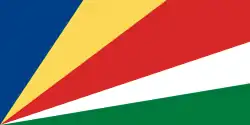
.svg.png.webp) November 26, 1981: Air India flight from Nairobi to Bombay was hijacked at Mahe Airport Seychelles by mercenaries while on a re-fuelling stop. The mercenaries were fleeing an abortive coup. The B707-300 (registration VT-DVB) was forced to fly to Durban. After freeing the 79 passengers and crew, the mercenaries surrendered.[94]
November 26, 1981: Air India flight from Nairobi to Bombay was hijacked at Mahe Airport Seychelles by mercenaries while on a re-fuelling stop. The mercenaries were fleeing an abortive coup. The B707-300 (registration VT-DVB) was forced to fly to Durban. After freeing the 79 passengers and crew, the mercenaries surrendered.[94] February 25, 1982: Kuwait Airways Flight KU561 from Kuwait to Beirut to Libya (return flight to Libya) was hijacked on the ground in Beirut, Lebanon on the return from Libya, with 150 aboard by Hamza akl Hamieh shortly after landing, demanding news and release of Imam Musa al-Sadr, founder of the Islamic group AMAL, who had disappeared in Libya in 1978. The hijackers threatened to kill passengers if demands were not met and Lebanese security forces did not withdraw from the area around the plane. Despite negotiations with a high level Shia cleric Sheikh Abdul Amir Qabalan it was the missing Imams sister, Rehab, who persuaded Hamza to abandon the aircraft. Sheikh Qabala promised that appeals would be launched at the UN, The Arab League and the World Court to find Imam Sadr. In all five of his previous hijackings, Hamza never faced trial or incarceration. Just after midnight they left the plane and disappeared into the night. Captain Les Bradley flew the damaged plane back to Kuwait. There were no casualties. Ref Sacred Rage:Robin Wright Pages 46–51
February 25, 1982: Kuwait Airways Flight KU561 from Kuwait to Beirut to Libya (return flight to Libya) was hijacked on the ground in Beirut, Lebanon on the return from Libya, with 150 aboard by Hamza akl Hamieh shortly after landing, demanding news and release of Imam Musa al-Sadr, founder of the Islamic group AMAL, who had disappeared in Libya in 1978. The hijackers threatened to kill passengers if demands were not met and Lebanese security forces did not withdraw from the area around the plane. Despite negotiations with a high level Shia cleric Sheikh Abdul Amir Qabalan it was the missing Imams sister, Rehab, who persuaded Hamza to abandon the aircraft. Sheikh Qabala promised that appeals would be launched at the UN, The Arab League and the World Court to find Imam Sadr. In all five of his previous hijackings, Hamza never faced trial or incarceration. Just after midnight they left the plane and disappeared into the night. Captain Les Bradley flew the damaged plane back to Kuwait. There were no casualties. Ref Sacred Rage:Robin Wright Pages 46–51

 July 1, 1982: A Sri Lankan, identified as Sepala Ekanayake, who was 33 years old, hijacked an Alitalia jumbo jet from Bangkok, Thailand, in order to be united with his wife and child and to return to Sri Lanka.
July 1, 1982: A Sri Lankan, identified as Sepala Ekanayake, who was 33 years old, hijacked an Alitalia jumbo jet from Bangkok, Thailand, in order to be united with his wife and child and to return to Sri Lanka. August 22, 1982: A lone Sikh militant, armed with a pistol and a hand grenade, hijacked an Indian Airlines on a scheduled flight from Mumbai to New Delhi carrying 69 persons. Indian security forces killed the hijacker and rescued all passengers. Peter Lamont, production designer working on the James Bond film Octopussy, was a passenger.
August 22, 1982: A lone Sikh militant, armed with a pistol and a hand grenade, hijacked an Indian Airlines on a scheduled flight from Mumbai to New Delhi carrying 69 persons. Indian security forces killed the hijacker and rescued all passengers. Peter Lamont, production designer working on the James Bond film Octopussy, was a passenger. January 20, 1983: Glenn Kurt Tripp, 20, of Arlington, Wash., said he had a bomb in a shoebox tried to hijack a jetliner to Afghanistan, and was shot by one of two Federal Bureau of Investigation agents who sneaked aboard when the plane landed at Portland. At 4:30 P.M., three hours after Northwest Flight 608 arrived from Seattle with six crew members and 35 passengers, F.B.I. agents climbed into the cockpit of the plane on a remote runway of Portland International Airport. All 41 people aboard escaped unhurt and no bomb was found. He was convicted of extortion and kidnapping in a July 11, 1980, hijack attempt at Seattle-Tacoma International Airport.[95]
January 20, 1983: Glenn Kurt Tripp, 20, of Arlington, Wash., said he had a bomb in a shoebox tried to hijack a jetliner to Afghanistan, and was shot by one of two Federal Bureau of Investigation agents who sneaked aboard when the plane landed at Portland. At 4:30 P.M., three hours after Northwest Flight 608 arrived from Seattle with six crew members and 35 passengers, F.B.I. agents climbed into the cockpit of the plane on a remote runway of Portland International Airport. All 41 people aboard escaped unhurt and no bomb was found. He was convicted of extortion and kidnapping in a July 11, 1980, hijack attempt at Seattle-Tacoma International Airport.[95]
 February 16, 1983: An Iranian man, Hussein Shey Kholya, hijacked a Rio Airways Dash 7 flight Killeen, TX ILE- Dallas, TX DFW. The plane landed in Nuevo Laredo, Mexico
February 16, 1983: An Iranian man, Hussein Shey Kholya, hijacked a Rio Airways Dash 7 flight Killeen, TX ILE- Dallas, TX DFW. The plane landed in Nuevo Laredo, Mexico November 18, 1983: Tbilisi hijacking incident.
November 18, 1983: Tbilisi hijacking incident..svg.png.webp) March 7, 1983: A Balkan Bulgarian Airlines An-24 is hijacked shortly after taking off at 18:00 local time for a regular flight from Sofia to Varna. Four men, aged from 17 to 22 (Lachezar Ivanov, Krasen Gechev, Ivaylo Vladimirov and Valentin Ivanov), produce knives and take the 40 passengers and crew hostage. They present themselves to the passengers as recently escaped recidivist criminals and threaten they will decompress the plane if an attempt is made to disarm them or impede the takeover. The hijackers proceed to threaten the stewardess and demand the plane is diverted to Vienna. A passenger is sent to the cockpit to communicate their demands to the pilot, who in turn relays them to local authorities and receives orders to simulate compliance, while actually maintaining a course to Varna. Meanwhile, authorities cut off all electrical power to Varna, in order to prevent the hijackers from recognizing the Black Sea coast. After landing at the Varna airport, a Bulgarian police officer and an airport worker, speaking fluent German are disguised as Austrian airport staff as they attempt to convince the hijackers they are in Vienna and lure them out of the plane. The hijackers look for a translator to negotiate their surrender, until one of them notices the disguised police officer is wearing a Bulgarian made leather jacket, which leads them to panic and threaten to start executing hostages. At this point the crew manages to let four commandos board the plane through a hatch in the luggage compartment, the commandos storm the plane, disarm and arrest three of the hijackers. The only remaining hijacker, distressed, has locked himself in the airplane bathroom and is threatening to kill the stewardess. Two more commandos enter the plane through the passenger hatch, kick in the bathroom door and shoot Ivanov as he attempts to kill his hostage. Ivanov is the only victim of the incident. The stewardess, having sustained a wound in her neck and bleeding heavily, was quickly transported to a nearby hospital and made a full recovery.[96][97][98]
March 7, 1983: A Balkan Bulgarian Airlines An-24 is hijacked shortly after taking off at 18:00 local time for a regular flight from Sofia to Varna. Four men, aged from 17 to 22 (Lachezar Ivanov, Krasen Gechev, Ivaylo Vladimirov and Valentin Ivanov), produce knives and take the 40 passengers and crew hostage. They present themselves to the passengers as recently escaped recidivist criminals and threaten they will decompress the plane if an attempt is made to disarm them or impede the takeover. The hijackers proceed to threaten the stewardess and demand the plane is diverted to Vienna. A passenger is sent to the cockpit to communicate their demands to the pilot, who in turn relays them to local authorities and receives orders to simulate compliance, while actually maintaining a course to Varna. Meanwhile, authorities cut off all electrical power to Varna, in order to prevent the hijackers from recognizing the Black Sea coast. After landing at the Varna airport, a Bulgarian police officer and an airport worker, speaking fluent German are disguised as Austrian airport staff as they attempt to convince the hijackers they are in Vienna and lure them out of the plane. The hijackers look for a translator to negotiate their surrender, until one of them notices the disguised police officer is wearing a Bulgarian made leather jacket, which leads them to panic and threaten to start executing hostages. At this point the crew manages to let four commandos board the plane through a hatch in the luggage compartment, the commandos storm the plane, disarm and arrest three of the hijackers. The only remaining hijacker, distressed, has locked himself in the airplane bathroom and is threatening to kill the stewardess. Two more commandos enter the plane through the passenger hatch, kick in the bathroom door and shoot Ivanov as he attempts to kill his hostage. Ivanov is the only victim of the incident. The stewardess, having sustained a wound in her neck and bleeding heavily, was quickly transported to a nearby hospital and made a full recovery.[96][97][98]




 August 27, 1983: Armed with guns and grenades, hijackers seized an Air France Boeing 727 aircraft after departure from Vienna, Austria. They forced it to land in Geneva, then Sicily and Damascus – over which period 93 of the 111 passengers and crew were released – before arriving in Tehran. The hijackers demanded the release of Lebanese prisoners in French prisons and the withdrawal of French troops from Lebanon. After three days of negotiations in Tehran, the hijackers surrendered and all remaining passengers were released unharmed.
August 27, 1983: Armed with guns and grenades, hijackers seized an Air France Boeing 727 aircraft after departure from Vienna, Austria. They forced it to land in Geneva, then Sicily and Damascus – over which period 93 of the 111 passengers and crew were released – before arriving in Tehran. The hijackers demanded the release of Lebanese prisoners in French prisons and the withdrawal of French troops from Lebanon. After three days of negotiations in Tehran, the hijackers surrendered and all remaining passengers were released unharmed..svg.png.webp)
 February 3, 1984: a Cruzeiro do Sul Airbus A300B4-203 flight 302 en route from São Luís to Belém-Val de Cães with 176 passengers and crew aboard was hijacked by 3 persons who demanded to be taken to Cuba. The flight reached Camagüey in less than a day. There were no victims.[99]
February 3, 1984: a Cruzeiro do Sul Airbus A300B4-203 flight 302 en route from São Luís to Belém-Val de Cães with 176 passengers and crew aboard was hijacked by 3 persons who demanded to be taken to Cuba. The flight reached Camagüey in less than a day. There were no victims.[99]


 August 1, 1984: an Air France Boeing 737-200 en route from Frankfurt to Paris with 82 passengers and crew aboard was hijacked by 3 hijackers who demanded to be taken to Tehran.[100] They were Arab protesters against military cooperation between France and Iraq on the Iran–Iraq War context. One steward escaped to the hijacker in Larnaca. The hijacking duration was 48 hours.[101] The hijackers destroyed the aircraft with explosives in front of the TV cameras. There were no victims.[102] Strangely, the hijackers were taken in a big black limousine and disappeared in Iran.
August 1, 1984: an Air France Boeing 737-200 en route from Frankfurt to Paris with 82 passengers and crew aboard was hijacked by 3 hijackers who demanded to be taken to Tehran.[100] They were Arab protesters against military cooperation between France and Iraq on the Iran–Iraq War context. One steward escaped to the hijacker in Larnaca. The hijacking duration was 48 hours.[101] The hijackers destroyed the aircraft with explosives in front of the TV cameras. There were no victims.[102] Strangely, the hijackers were taken in a big black limousine and disappeared in Iran.
 August 24, 1984: Seven young Sikh hijackers demanded an Indian Airlines jetliner flying from Delhi to Srinagar[103] be flown to the United Arab Emirates. The plane was taken to UAE where the defense minister of UAE negotiated the release of the passengers. It was related to the Sikh secessionist struggle in the Indian state of Punjab.
August 24, 1984: Seven young Sikh hijackers demanded an Indian Airlines jetliner flying from Delhi to Srinagar[103] be flown to the United Arab Emirates. The plane was taken to UAE where the defense minister of UAE negotiated the release of the passengers. It was related to the Sikh secessionist struggle in the Indian state of Punjab.
 November 6, 1984: Two Yemeni hijackers boarded Saudi Airlines flight 040 during a stopover in Jeddah, Saudi Arabia. The flight was travelling from London to Riyadh. One of the Yemenis stormed the cockpit and demanded the flight crew divert to Tehran. Despite reports from the time that Iranian security forces stormed the plane to free the 117 passengers and 14 crew members, in reality a Saudi doctor on board broke into the fire ax box and the pilots overtook the hijacker, pinning him to the floor in first class. The doctor hit the hijacker with the ax under each ear while flight attendants opened the doors and inflated the emergency slides to evacuate the passengers.[104]
November 6, 1984: Two Yemeni hijackers boarded Saudi Airlines flight 040 during a stopover in Jeddah, Saudi Arabia. The flight was travelling from London to Riyadh. One of the Yemenis stormed the cockpit and demanded the flight crew divert to Tehran. Despite reports from the time that Iranian security forces stormed the plane to free the 117 passengers and 14 crew members, in reality a Saudi doctor on board broke into the fire ax box and the pilots overtook the hijacker, pinning him to the floor in first class. The doctor hit the hijacker with the ax under each ear while flight attendants opened the doors and inflated the emergency slides to evacuate the passengers.[104]
 December 3, 1984: Kuwait Airways Flight 221 Lebanese Shi'a hijackers divert a Kuwait Airways flight to Tehran. Two American USAID officials are shot dead and dumped on the tarmac. The plane is taken by Iranian security forces who were dressed as custodial staff.[105]
December 3, 1984: Kuwait Airways Flight 221 Lebanese Shi'a hijackers divert a Kuwait Airways flight to Tehran. Two American USAID officials are shot dead and dumped on the tarmac. The plane is taken by Iranian security forces who were dressed as custodial staff.[105]
 June 14, 1985: Lebanese Shi'a Amal hijackers divert TWA Flight 847 from Athens to Beirut with 153 people on board. The stand-off ends after Israel frees 31 Lebanese prisoners. Among the passengers was famous Greek singer Demis Roussos. US Navy diver Robert Stethem is tortured and murdered.
June 14, 1985: Lebanese Shi'a Amal hijackers divert TWA Flight 847 from Athens to Beirut with 153 people on board. The stand-off ends after Israel frees 31 Lebanese prisoners. Among the passengers was famous Greek singer Demis Roussos. US Navy diver Robert Stethem is tortured and murdered.

 November 23, 1985: Three Palestinian members of the Abu Nidal Organization hijacked its Athens to Cairo route, EgyptAir Flight 648 and fly it to Malta. All together, 60 people died, most of them when Egyptian commandos stormed the aircraft.
November 23, 1985: Three Palestinian members of the Abu Nidal Organization hijacked its Athens to Cairo route, EgyptAir Flight 648 and fly it to Malta. All together, 60 people died, most of them when Egyptian commandos stormed the aircraft.
 December 19, 1985: Yakutsk United Air Group Flight 101/435 was hijacked by the co-pilot and diverted to China. The hijacker was apprehended by the Chinese upon landing, while the passengers returned safely to the Soviet Union.[106]
December 19, 1985: Yakutsk United Air Group Flight 101/435 was hijacked by the co-pilot and diverted to China. The hijacker was apprehended by the Chinese upon landing, while the passengers returned safely to the Soviet Union.[106]
 May 3, 1986: The Taiwanese pilot of China Airlines Flight 334 subdued his two crew mates on board the cargo flight to Bangkok, Thailand and flew the plane to Guangzhou, mainland China where he defected. The incident triggered the isolationist ROC government to reopen cross-strait negotiations and eventually scrap its Three Noes policy.
May 3, 1986: The Taiwanese pilot of China Airlines Flight 334 subdued his two crew mates on board the cargo flight to Bangkok, Thailand and flew the plane to Guangzhou, mainland China where he defected. The incident triggered the isolationist ROC government to reopen cross-strait negotiations and eventually scrap its Three Noes policy.

 September 5, 1986: 22 people are killed when Pakistani security forces storm Pan Am Flight 73 at Karachi, carrying 360 passengers and crew after a 16-hour siege. The flight was en route to Frankfurt from Mumbai, India when the flight was hijacked on the ground in Karachi. On 19 February 2016, Bollywood movie Neerja was released on this hijacking.
September 5, 1986: 22 people are killed when Pakistani security forces storm Pan Am Flight 73 at Karachi, carrying 360 passengers and crew after a 16-hour siege. The flight was en route to Frankfurt from Mumbai, India when the flight was hijacked on the ground in Karachi. On 19 February 2016, Bollywood movie Neerja was released on this hijacking.
%253B_Flag_of_Syria_(1963%E2%80%931972).svg.png.webp) December 25, 1986: 63 people are killed when Iraqi Airways Flight 163 crashes near Arar, Saudi Arabia due to an explosion in the cockpit. The plane was hijacked by 3 men of the pro-Iranian group Islamic Jihad.
December 25, 1986: 63 people are killed when Iraqi Airways Flight 163 crashes near Arar, Saudi Arabia due to an explosion in the cockpit. The plane was hijacked by 3 men of the pro-Iranian group Islamic Jihad. January 11, 1987: A Continental Airlines DC-9 was hijacked in flight by Norwood Emanuel on Jan. 11, 1987. Captain Mark Meyer was credited with thwarting the hijacking by quickly landing at Dulles International outside of Washington D.C.. Capt. Meyer then confronted and distracted Emanuel in the rear of the cabin allowing all 49 passengers and crew to successfully evacuate onto the ramp. Capt. Meyer escaped 2 hours later. The FBI eventually talked Emanuel off of the aircraft. There were no deaths or injuries.[107][108]
January 11, 1987: A Continental Airlines DC-9 was hijacked in flight by Norwood Emanuel on Jan. 11, 1987. Captain Mark Meyer was credited with thwarting the hijacking by quickly landing at Dulles International outside of Washington D.C.. Capt. Meyer then confronted and distracted Emanuel in the rear of the cabin allowing all 49 passengers and crew to successfully evacuate onto the ramp. Capt. Meyer escaped 2 hours later. The FBI eventually talked Emanuel off of the aircraft. There were no deaths or injuries.[107][108]
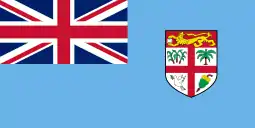 May 19, 1987: Air New Zealand Flight 24. An aircraft refueller at Nadi International Airport, Fiji, attempted to hijack an Air New Zealand Boeing 747-200 stopping at Nadi en route from Tokyo to Auckland. The hijacker entered the cockpit and held the captain, first officer and flight engineer hostage, demanding that the Timoci Bavadra-led government be restored after they were ousted in a military coup d'état six days earlier. After six hours, the hijacker got distracted and the flight engineer knocked him out with a bottle of whisky. None of the 105 passengers or 24 crew (including the three hostages) on board were injured.[109]
May 19, 1987: Air New Zealand Flight 24. An aircraft refueller at Nadi International Airport, Fiji, attempted to hijack an Air New Zealand Boeing 747-200 stopping at Nadi en route from Tokyo to Auckland. The hijacker entered the cockpit and held the captain, first officer and flight engineer hostage, demanding that the Timoci Bavadra-led government be restored after they were ousted in a military coup d'état six days earlier. After six hours, the hijacker got distracted and the flight engineer knocked him out with a bottle of whisky. None of the 105 passengers or 24 crew (including the three hostages) on board were injured.[109]
 December 24, 1987: KLM Flight 343 was hijacked by 15 year old Zino Scioni who said he had a bomb which he said he could control with his wrist watch. He forced the plane to land at Rome and demanded $1 million ransom and a plane to take him to Kuwait then Chad and finally the United States. At 9 pm the hijacker released about 60 passengers. At 11 pm the hijacker was captured by tricking him to get into a car which he thought would take him to the plane and the rest of the hostages were released.[110]
December 24, 1987: KLM Flight 343 was hijacked by 15 year old Zino Scioni who said he had a bomb which he said he could control with his wrist watch. He forced the plane to land at Rome and demanded $1 million ransom and a plane to take him to Kuwait then Chad and finally the United States. At 9 pm the hijacker released about 60 passengers. At 11 pm the hijacker was captured by tricking him to get into a car which he thought would take him to the plane and the rest of the hostages were released.[110] March 8, 1988: Aeroflot Flight 3739. Ovechkin family (a mother and 10 of her children) attempted to hijack a Tu 154 flight from Irkutsk to Leningrad while trying to escape from the USSR. The plane landed on a military airfield near Vyborg and was then stormed. A stewardess and three passengers were killed. The mother was killed by one of her sons by her own request, then four of them committed suicide.
March 8, 1988: Aeroflot Flight 3739. Ovechkin family (a mother and 10 of her children) attempted to hijack a Tu 154 flight from Irkutsk to Leningrad while trying to escape from the USSR. The plane landed on a military airfield near Vyborg and was then stormed. A stewardess and three passengers were killed. The mother was killed by one of her sons by her own request, then four of them committed suicide. April 5, 1988: Kuwait Airways Flight 422 was hijacked from Bangkok to Kuwait with 111 passengers and crew aboard, including three members of the Kuwaiti Royal Family. 6 – 7 Lebanese men[111] (including Hassan Izz-Al-Din, a veteran of the TWA 847 hijacking[112]) armed with guns and hand grenades forced the pilot to land in Mashhad, Iran and demanded the release of 17 Shiite Muslims guerrillas held in Kuwait. Lasting 16 days and traveling 3,200-miles from Mashhad in northeastern Iran to Larnaca, Cyprus, and finally to Algiers, it is the longest skyjacking to date. Two passengers, Abdullah Khalidi, 25, and Khalid Ayoub Bandar, 20, both Kuwaitis, were shot dead by the hijackers and dumped on the tarmac in Cyprus.[113] Kuwait did not release the 17 prisoners and the hijackers were allowed to leave Algiers.
April 5, 1988: Kuwait Airways Flight 422 was hijacked from Bangkok to Kuwait with 111 passengers and crew aboard, including three members of the Kuwaiti Royal Family. 6 – 7 Lebanese men[111] (including Hassan Izz-Al-Din, a veteran of the TWA 847 hijacking[112]) armed with guns and hand grenades forced the pilot to land in Mashhad, Iran and demanded the release of 17 Shiite Muslims guerrillas held in Kuwait. Lasting 16 days and traveling 3,200-miles from Mashhad in northeastern Iran to Larnaca, Cyprus, and finally to Algiers, it is the longest skyjacking to date. Two passengers, Abdullah Khalidi, 25, and Khalid Ayoub Bandar, 20, both Kuwaitis, were shot dead by the hijackers and dumped on the tarmac in Cyprus.[113] Kuwait did not release the 17 prisoners and the hijackers were allowed to leave Algiers..svg.png.webp) September 29, 1988: a man hijacked a VASP Boeing 737-300 registration PP-SNT operating flight 375 en route from Belo Horizonte-Pampulha to Rio de Janeiro. He wanted to force a crash on the Palácio do Planalto, the official presidential workplace in Brasília. The pilot convinced the hijacker to divert to Goiânia where an emergency landing was made. The hijack ended with 1 victim.[114][115]
September 29, 1988: a man hijacked a VASP Boeing 737-300 registration PP-SNT operating flight 375 en route from Belo Horizonte-Pampulha to Rio de Janeiro. He wanted to force a crash on the Palácio do Planalto, the official presidential workplace in Brasília. The pilot convinced the hijacker to divert to Goiânia where an emergency landing was made. The hijack ended with 1 victim.[114][115] December 1, 1988: 1988 Ordzhonikidze bus hijacking
December 1, 1988: 1988 Ordzhonikidze bus hijacking
 March 29, 1989: Two teenagers from Czechoslovakia armed with grenades and shotguns hijack Malév Hungarian Airlines Flight 640 at Prague Ruzyně Airport, and fly the Tupolev Tu-154B with 15 hostages to Frankfurt Airport before surrendering.[116]
March 29, 1989: Two teenagers from Czechoslovakia armed with grenades and shotguns hijack Malév Hungarian Airlines Flight 640 at Prague Ruzyně Airport, and fly the Tupolev Tu-154B with 15 hostages to Frankfurt Airport before surrendering.[116]
1990s

 August 1, 1990: British Airways Flight 149 landed in Kuwait the same day that Iraq under Saddam Hussein invaded the country. The Iraqi Army seized the plane and held the passengers hostage. All the hostages were released at the war's end, while the plane was destroyed.
August 1, 1990: British Airways Flight 149 landed in Kuwait the same day that Iraq under Saddam Hussein invaded the country. The Iraqi Army seized the plane and held the passengers hostage. All the hostages were released at the war's end, while the plane was destroyed. October 2, 1990: A hijacker seized a plane from China which later crashed as it tried to land in Guangzhou, killing 128 people.
October 2, 1990: A hijacker seized a plane from China which later crashed as it tried to land in Guangzhou, killing 128 people.
 March 26, 1991: Singapore Airlines Flight 117 was hijacked en route from Subang Airport to Singapore Changi Airport by 4 individuals claiming to be members of the Pakistan Peoples Party. Elite Singapore Special Operations Force members stormed the plane on 27 March, killing all four hijackers and freeing all 118 passengers and 9 crew in an operation lasting just 30 seconds. None of the passengers and crew were injured.
March 26, 1991: Singapore Airlines Flight 117 was hijacked en route from Subang Airport to Singapore Changi Airport by 4 individuals claiming to be members of the Pakistan Peoples Party. Elite Singapore Special Operations Force members stormed the plane on 27 March, killing all four hijackers and freeing all 118 passengers and 9 crew in an operation lasting just 30 seconds. None of the passengers and crew were injured..svg.png.webp)
 November 9, 1991: Shamil Basaev seized a plane from Mineralnye Vody Airport and landed in Turkey in sign of protest of August Coup and State Committee on the State of Emergency
November 9, 1991: Shamil Basaev seized a plane from Mineralnye Vody Airport and landed in Turkey in sign of protest of August Coup and State Committee on the State of Emergency
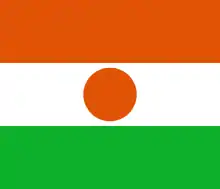 Monday, October 25, 1993: Nigerian Airways airbus A310 the plane flying from Lagos to Abuja Nigeria was hijacked by four young men; Richard Ogunderu, Kabir Adenuga, Benneth Oluwadaisi and Kenny Rasaq-Lawal members of Movement for the Advancement of Democracy. The flight was diverted to Niamey in Niger although the initial plan was to land the hijacked plane in Germany however, low fuel in the Jet necessitated a landing in Niamey. On landing, the hijackers found hundreds of armed gendarmes at the airport, but before then they had distributed their demands among the passengers, calling on the Nigerian government to overturn the annulment of the June 12 election and swear in Moshood Abiola, the acclaimed winner of the election.They gave the government 72 hours to meet their demands or else they would set the plane ablaze. However, they allowed 34 passengers to go and held onto the remaining 159 among whom were top Nigerian government officials. The four held on to the plane for some days, trailed by bait negotiations until the gendarmes stormed the plane to rescue the remaining passengers.[117]
Monday, October 25, 1993: Nigerian Airways airbus A310 the plane flying from Lagos to Abuja Nigeria was hijacked by four young men; Richard Ogunderu, Kabir Adenuga, Benneth Oluwadaisi and Kenny Rasaq-Lawal members of Movement for the Advancement of Democracy. The flight was diverted to Niamey in Niger although the initial plan was to land the hijacked plane in Germany however, low fuel in the Jet necessitated a landing in Niamey. On landing, the hijackers found hundreds of armed gendarmes at the airport, but before then they had distributed their demands among the passengers, calling on the Nigerian government to overturn the annulment of the June 12 election and swear in Moshood Abiola, the acclaimed winner of the election.They gave the government 72 hours to meet their demands or else they would set the plane ablaze. However, they allowed 34 passengers to go and held onto the remaining 159 among whom were top Nigerian government officials. The four held on to the plane for some days, trailed by bait negotiations until the gendarmes stormed the plane to rescue the remaining passengers.[117]
 February 11, 1993: Lufthansa Flight 592 scheduled service from Frankfurt to Cairo and Addis Ababa, was hijacked at gunpoint by Nebiu Demeke, an Ethiopian man. The A310 initially flew to Hannover for fuel before flying to New York's JFK where the hijacker surrendered after brief negotiations. No passengers or crew were injured or killed.
February 11, 1993: Lufthansa Flight 592 scheduled service from Frankfurt to Cairo and Addis Ababa, was hijacked at gunpoint by Nebiu Demeke, an Ethiopian man. The A310 initially flew to Hannover for fuel before flying to New York's JFK where the hijacker surrendered after brief negotiations. No passengers or crew were injured or killed. April 24, 1993: Two separate hijackings of Indian Airlines aircraft to Amritsar, Punjab, India in the month of April. In the first case the hijacker was talked into surrendering; in the second, the NSG stormed in and killed the two hijackers and captured one. The Amritsar Deputy Commissioner Karan Bir Singh Sidhu was conferred the Convoy Safe Skies Award.
April 24, 1993: Two separate hijackings of Indian Airlines aircraft to Amritsar, Punjab, India in the month of April. In the first case the hijacker was talked into surrendering; in the second, the NSG stormed in and killed the two hijackers and captured one. The Amritsar Deputy Commissioner Karan Bir Singh Sidhu was conferred the Convoy Safe Skies Award..svg.png.webp)
 September 15, 1993: Russian Aeroflot passenger jet flying from Perm to Moscow diverted to Gardermoen airport by two Iranian brothers. Hijackers surrendered and hostages went free. The hijackers were later given asylum in Norway for humanitarian reasons.
September 15, 1993: Russian Aeroflot passenger jet flying from Perm to Moscow diverted to Gardermoen airport by two Iranian brothers. Hijackers surrendered and hostages went free. The hijackers were later given asylum in Norway for humanitarian reasons. April 7, 1994: FedEx Flight 705 experienced an attempted hijack by disgruntled employee Auburn Calloway as it left Memphis, Tennessee, with the intention of crashing it after being fired the previous day. He was subdued by the flight crew before an emergency landing back at Memphis.
April 7, 1994: FedEx Flight 705 experienced an attempted hijack by disgruntled employee Auburn Calloway as it left Memphis, Tennessee, with the intention of crashing it after being fired the previous day. He was subdued by the flight crew before an emergency landing back at Memphis.
 December 24, 1994: Air France Flight 8969 was hijacked from Algiers by four GIA hijackers planning to crash into the Eiffel Tower in central Paris. After the murder of 3 passengers, GIGN commandos stormed the plane in Marseilles, killing all hijackers and freeing all remaining passengers.
December 24, 1994: Air France Flight 8969 was hijacked from Algiers by four GIA hijackers planning to crash into the Eiffel Tower in central Paris. After the murder of 3 passengers, GIGN commandos stormed the plane in Marseilles, killing all hijackers and freeing all remaining passengers.
 August 3, 1995: Airstan incident: Russian cargo jet flying from Tirana to Kabul was forced to land in Kandahar by Taliban forces. Jet's crew had been held in a captivity until escape in 1996.
August 3, 1995: Airstan incident: Russian cargo jet flying from Tirana to Kabul was forced to land in Kandahar by Taliban forces. Jet's crew had been held in a captivity until escape in 1996.
 September 20, 1995: Iranian defector and flight attendant Rida Garari hijacked Kish Air flight 707, which landed in Israel. No casualties.
September 20, 1995: Iranian defector and flight attendant Rida Garari hijacked Kish Air flight 707, which landed in Israel. No casualties.

 September 3, 1996: Hemus Air Tu-154 aircraft was hijacked by the Palestinian Nadir Abdallah, flying from Beirut to Varna. The hijacker demanded that the aircraft be refuelled and given passage to Oslo, Norway after landing at Varna Airport. All of the 150 passengers were freed at Varna, afterwards the crew continued the flight to Oslo, where the hijacker surrendered and asked for political asylum.[118]
September 3, 1996: Hemus Air Tu-154 aircraft was hijacked by the Palestinian Nadir Abdallah, flying from Beirut to Varna. The hijacker demanded that the aircraft be refuelled and given passage to Oslo, Norway after landing at Varna Airport. All of the 150 passengers were freed at Varna, afterwards the crew continued the flight to Oslo, where the hijacker surrendered and asked for political asylum.[118].svg.png.webp) November 23, 1996: Ethiopian Airlines Flight 961 crashed into the Indian Ocean near a beach in the Comoros Islands after hijackers refused to allow the pilot to land and refuel the plane. 125 passengers died and the remaining 50 passengers survived with minor injuries. This was the third incident in which there were survivors of a passenger jet that had been intentionally ditched into a body of water.
November 23, 1996: Ethiopian Airlines Flight 961 crashed into the Indian Ocean near a beach in the Comoros Islands after hijackers refused to allow the pilot to land and refuel the plane. 125 passengers died and the remaining 50 passengers survived with minor injuries. This was the third incident in which there were survivors of a passenger jet that had been intentionally ditched into a body of water.
 June 9, 1997: Two Turkish men hijacked Air Malta Flight 830 en route from Malta to Turkey on June 9, 1997 surrendered to police at an airport in Cologne, Germany, early on the same day and freed without incident about 80 crew members and passengers on board.
June 9, 1997: Two Turkish men hijacked Air Malta Flight 830 en route from Malta to Turkey on June 9, 1997 surrendered to police at an airport in Cologne, Germany, early on the same day and freed without incident about 80 crew members and passengers on board. May 25, 1998: Four men hijacked PIA Flight 544 en route from Gwadar to Turbat. The hijackers were arrested without casualties.
May 25, 1998: Four men hijacked PIA Flight 544 en route from Gwadar to Turbat. The hijackers were arrested without casualties. 12 April 1999: A Fokker 50 operating Avianca Colombian Airlines flight 9463(es) from Bogotá to Bucaramanga was hijacked by 6 ELN members, who forced the plane to make an emergency landing on a clandestine runway in the Bolivar region. A few of the about 40 passengers were released quickly, others were occasionally released when private ransom monies were paid. A negotiator- a celebrity comedian- was assassinated. Many hostages were held for more than a year, and one passenger died during captivity, (heart attack). The last hostage was not released until 19 months after the hijacking, on 22 November 2000.[119][120] Passenger Leszli Kálli wrote a book about her experience based on her diaries; tedium was her biggest complaint.
12 April 1999: A Fokker 50 operating Avianca Colombian Airlines flight 9463(es) from Bogotá to Bucaramanga was hijacked by 6 ELN members, who forced the plane to make an emergency landing on a clandestine runway in the Bolivar region. A few of the about 40 passengers were released quickly, others were occasionally released when private ransom monies were paid. A negotiator- a celebrity comedian- was assassinated. Many hostages were held for more than a year, and one passenger died during captivity, (heart attack). The last hostage was not released until 19 months after the hijacking, on 22 November 2000.[119][120] Passenger Leszli Kálli wrote a book about her experience based on her diaries; tedium was her biggest complaint. July 23, 1999: All Nippon Airways Flight 61 was hijacked by a lone man. He killed the pilot before being subdued.
July 23, 1999: All Nippon Airways Flight 61 was hijacked by a lone man. He killed the pilot before being subdued.



 December 24, 1999: Pakistan-based hijackers hijacked Indian Airlines Flight 814 en route from Kathmandu and diverted it to Amritsar, Lahore, Dubai, and finally Kandahar. After a week-long stand-off India agreed to release three jailed terrorists in exchange for the hostages. One hostage was stabbed to death and his body thrown on the tarmac as a "warning attack".
December 24, 1999: Pakistan-based hijackers hijacked Indian Airlines Flight 814 en route from Kathmandu and diverted it to Amritsar, Lahore, Dubai, and finally Kandahar. After a week-long stand-off India agreed to release three jailed terrorists in exchange for the hostages. One hostage was stabbed to death and his body thrown on the tarmac as a "warning attack".
2000s

 February 6, 2000: Ariana Afghan Airlines Boeing 727 was hijacked on an internal flight within Taliban-controlled Afghanistan, and ended up at London Stansted Airport, where most of the passengers claimed political asylum.
February 6, 2000: Ariana Afghan Airlines Boeing 727 was hijacked on an internal flight within Taliban-controlled Afghanistan, and ended up at London Stansted Airport, where most of the passengers claimed political asylum. May 25, 2000: Philippine Airlines Flight 812 was hijacked en route from Davao City, Philippines to Manila. The hijacker parachuted from the aircraft while still airborne; his body was later found.
May 25, 2000: Philippine Airlines Flight 812 was hijacked en route from Davao City, Philippines to Manila. The hijacker parachuted from the aircraft while still airborne; his body was later found. August 18, 2000: A VASP Boeing 737-2A1 registration PP-SMG en route from Foz do Iguaçu to Curitiba-Afonso Pena was hijacked by 5 persons with the purpose of robbing BRL 5 million (approximately US$2.75 million) that the aircraft was transporting. The pilot was forced to land at Porecatu where the hijackers fled with the money. There were no victims.[121][122]
August 18, 2000: A VASP Boeing 737-2A1 registration PP-SMG en route from Foz do Iguaçu to Curitiba-Afonso Pena was hijacked by 5 persons with the purpose of robbing BRL 5 million (approximately US$2.75 million) that the aircraft was transporting. The pilot was forced to land at Porecatu where the hijackers fled with the money. There were no victims.[121][122]
.svg.png.webp) October 14, 2000: Saudi Arabian Airlines Flight 115,[123] flying from Jeddah to London was hijacked en route by two men who claimed they were armed with explosives. The hijackers commandeered the Boeing 777-200 to Baghdad, Iraq, where all 90 passengers and 15 crew members were safely released. The two hijackers, identified as Lieutenant Faisal Naji Hamoud Al-Bilawi and First Lieutenant Ayesh Ali Hussein Al-Fareedi,[124] both Saudi citizens, were arrested and later extradited to Saudi Arabia in 2003.[125]
October 14, 2000: Saudi Arabian Airlines Flight 115,[123] flying from Jeddah to London was hijacked en route by two men who claimed they were armed with explosives. The hijackers commandeered the Boeing 777-200 to Baghdad, Iraq, where all 90 passengers and 15 crew members were safely released. The two hijackers, identified as Lieutenant Faisal Naji Hamoud Al-Bilawi and First Lieutenant Ayesh Ali Hussein Al-Fareedi,[124] both Saudi citizens, were arrested and later extradited to Saudi Arabia in 2003.[125]
 November 11, 2000: A Vnukovo Airlines Tu-154 flying from Makhachkala to Moscow was hijacked by a man demanding it be diverted to Israel. The plane landed at an Israeli military base where the hijacker surrendered. None of 59 people on board were injured.[126]
November 11, 2000: A Vnukovo Airlines Tu-154 flying from Makhachkala to Moscow was hijacked by a man demanding it be diverted to Israel. The plane landed at an Israeli military base where the hijacker surrendered. None of 59 people on board were injured.[126]
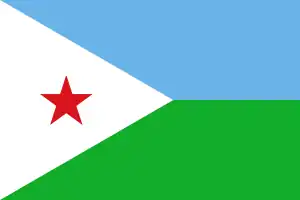 January 23, 2001: Yemenia Flight 448 was hijacked by a man armed with a pen gun who demanded to be taken to Baghdad, Iraq. In addition to his gun, he claimed to have explosives hidden in his suitcase. The flight crew convinced the hijacker to divert to Djibouti to refuel, where they overpowered him. He was extradited to Yemen, and sentenced to 15 years in prison.
January 23, 2001: Yemenia Flight 448 was hijacked by a man armed with a pen gun who demanded to be taken to Baghdad, Iraq. In addition to his gun, he claimed to have explosives hidden in his suitcase. The flight crew convinced the hijacker to divert to Djibouti to refuel, where they overpowered him. He was extradited to Yemen, and sentenced to 15 years in prison.

 March 15, 2001: Another Vnukovo Airlines Tu-154 flying from Istanbul to Moscow was hijacked by three Chechens demanding it be diverted to Saudi Arabia. After the plane with 174 people on board landed at Medina the hijacker threatened to blow it up unless it would be refuelled for flying to Afghanistan. The Saudi authorities stormed the plane. During the assault, Saudi police killed two people: one of the passengers (Turkish citizen), and the leader of the hijackers. The stewardess, Yulia Fomina, was killed during the hijacking, and later the plane was named after her.[127]
March 15, 2001: Another Vnukovo Airlines Tu-154 flying from Istanbul to Moscow was hijacked by three Chechens demanding it be diverted to Saudi Arabia. After the plane with 174 people on board landed at Medina the hijacker threatened to blow it up unless it would be refuelled for flying to Afghanistan. The Saudi authorities stormed the plane. During the assault, Saudi police killed two people: one of the passengers (Turkish citizen), and the leader of the hijackers. The stewardess, Yulia Fomina, was killed during the hijacking, and later the plane was named after her.[127]
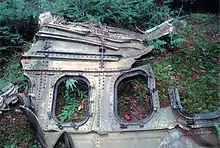
United Airlines Flight 93 wreckage at the crash site in Somerset County, Pennsylvania on September 11, 2001
 September 11, 2001: American Airlines Flight 11, United Airlines Flight 175, American Airlines Flight 77, and United Airlines Flight 93 were hijacked on the morning of September 11 by Al-Qaeda-affiliated extremists and used as suicide weapons. Flight 11 and 175 were deliberately crashed into the Twin Towers of the World Trade Center, Flight 77 was crashed into the Pentagon, and Flight 93 crashed into a field in Pennsylvania after hijackers crashed the plane due to a revolt by passengers. Both towers of the World Trade Center collapsed, and the Pentagon was severely damaged along its western facade; in total 2,996 people, including the 19 hijackers, were killed and over 6,000 people were injured. The suicide attacks led to the War on Terror.
September 11, 2001: American Airlines Flight 11, United Airlines Flight 175, American Airlines Flight 77, and United Airlines Flight 93 were hijacked on the morning of September 11 by Al-Qaeda-affiliated extremists and used as suicide weapons. Flight 11 and 175 were deliberately crashed into the Twin Towers of the World Trade Center, Flight 77 was crashed into the Pentagon, and Flight 93 crashed into a field in Pennsylvania after hijackers crashed the plane due to a revolt by passengers. Both towers of the World Trade Center collapsed, and the Pentagon was severely damaged along its western facade; in total 2,996 people, including the 19 hijackers, were killed and over 6,000 people were injured. The suicide attacks led to the War on Terror..svg.png.webp) May 29, 2003: 10 minutes after take off, a man attempted to hijack Qantas Flight 1737 that was on flight from Melbourne Airport to Launceston Airport. With two sharpened wooden stakes from his pocket, he was overpowered by the flight purser and other passengers.
May 29, 2003: 10 minutes after take off, a man attempted to hijack Qantas Flight 1737 that was on flight from Melbourne Airport to Launceston Airport. With two sharpened wooden stakes from his pocket, he was overpowered by the flight purser and other passengers.
 October 3, 2006: Turkish Airlines Flight 1476, flying from Tirana to Istanbul, was hijacked by Hakan Ekinci in Greek airspace. The aircraft, with 107 passengers and six crew on board, transmitted two coded hijack signals which were picked up by the Greek air force; the flight was intercepted by military aircraft and landed safely at Brindisi, Italy.
October 3, 2006: Turkish Airlines Flight 1476, flying from Tirana to Istanbul, was hijacked by Hakan Ekinci in Greek airspace. The aircraft, with 107 passengers and six crew on board, transmitted two coded hijack signals which were picked up by the Greek air force; the flight was intercepted by military aircraft and landed safely at Brindisi, Italy.
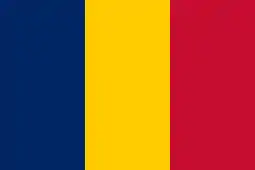 January 24, 2007: an Air West Boeing 737 was hijacked over Sudan, but landed safely at N'Djamena, Chad.
January 24, 2007: an Air West Boeing 737 was hijacked over Sudan, but landed safely at N'Djamena, Chad.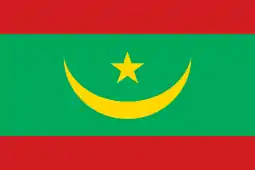
 February 15, 2007: an Air Mauritanie Boeing 737 flying from Nouakchott to Las Palmas with 87 passengers on board was hijacked by a man who wanted to fly to Paris, but the plane landed in an air base near Las Palmas and the hijacker, a Moroccan, was arrested.[128]
February 15, 2007: an Air Mauritanie Boeing 737 flying from Nouakchott to Las Palmas with 87 passengers on board was hijacked by a man who wanted to fly to Paris, but the plane landed in an air base near Las Palmas and the hijacker, a Moroccan, was arrested.[128]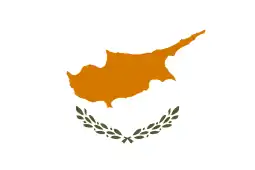
 August 18, 2007: an Atlasjet MD-80 en route from Nicosia to Istanbul was hijacked by two Arab students, who said they were Al Qaeda operatives, one trained in Afghanistan, and wanted to go to Tehran, Iran. The plane landed in Antalya, the passengers escaped and the hijackers were arrested.[129]
August 18, 2007: an Atlasjet MD-80 en route from Nicosia to Istanbul was hijacked by two Arab students, who said they were Al Qaeda operatives, one trained in Afghanistan, and wanted to go to Tehran, Iran. The plane landed in Antalya, the passengers escaped and the hijackers were arrested.[129]
.svg.png.webp) August 26, 2007: a Sun Air Boeing 737 flying from Nyala, Darfur, in Western Sudan to the Sudanese capital, Khartoum, was hijacked shortly after takeoff. The hijackers demanded to be taken to France where they reputedly wanted to gain asylum. The plane initially tried to land at Cairo but was refused permission. It subsequently touched down at Kufra, Libya. The hijackers gave themselves up almost 24 hours after taking the plane. There were no reported casualties.
August 26, 2007: a Sun Air Boeing 737 flying from Nyala, Darfur, in Western Sudan to the Sudanese capital, Khartoum, was hijacked shortly after takeoff. The hijackers demanded to be taken to France where they reputedly wanted to gain asylum. The plane initially tried to land at Cairo but was refused permission. It subsequently touched down at Kufra, Libya. The hijackers gave themselves up almost 24 hours after taking the plane. There were no reported casualties. February 8, 2008: Eagle Airways Flight 2279 a British Aerospace Jetstream 32EP ZK-ECN flying from Blenheim to Christchurch was hijacked shortly after takeoff. The hijacker demanded the flight be diverted to Australia. She stabbed both pilots and a passenger before the plane safely landed at Christchurch Airport. She alleged there were two explosives on board, but after an inspection by NZ Police nothing was found.
February 8, 2008: Eagle Airways Flight 2279 a British Aerospace Jetstream 32EP ZK-ECN flying from Blenheim to Christchurch was hijacked shortly after takeoff. The hijacker demanded the flight be diverted to Australia. She stabbed both pilots and a passenger before the plane safely landed at Christchurch Airport. She alleged there were two explosives on board, but after an inspection by NZ Police nothing was found. April 19, 2009: CanJet Flight 918, a Boeing 737-800 preparing to depart from the Sangster International Airport in Montego Bay, Jamaica to Canada was hijacked by a gunman who forced his way through airport security onto the plane. His main motive was a demand to the crew to fly him to Cuba. Most of the passengers on the plane gave him money to buy their freedom. For the rest of the night, negotiations took place as 6 crew members were held hostage in the flight for several hours. Quick responses from the police force allowed them to disarm the hijacker and arrest him. There were no casualties.
April 19, 2009: CanJet Flight 918, a Boeing 737-800 preparing to depart from the Sangster International Airport in Montego Bay, Jamaica to Canada was hijacked by a gunman who forced his way through airport security onto the plane. His main motive was a demand to the crew to fly him to Cuba. Most of the passengers on the plane gave him money to buy their freedom. For the rest of the night, negotiations took place as 6 crew members were held hostage in the flight for several hours. Quick responses from the police force allowed them to disarm the hijacker and arrest him. There were no casualties. September 9, 2009: AeroMéxico Flight 576, a Boeing 737-800 flying from Cancún to Mexico City was hijacked by José Marc Flores Pereira, a Bolivian citizen claiming he had a bomb and demanding to speak to Mexican president Felipe Calderón. The plane landed at Mexico City International Airport where it then taxied to a remote stand where the passengers and crew were later released. Mexican officials stormed the plane where 5 men were taken into custody with only 1 being held. There were no casualties. It was the first hijacking for the airline.
September 9, 2009: AeroMéxico Flight 576, a Boeing 737-800 flying from Cancún to Mexico City was hijacked by José Marc Flores Pereira, a Bolivian citizen claiming he had a bomb and demanding to speak to Mexican president Felipe Calderón. The plane landed at Mexico City International Airport where it then taxied to a remote stand where the passengers and crew were later released. Mexican officials stormed the plane where 5 men were taken into custody with only 1 being held. There were no casualties. It was the first hijacking for the airline.
2010s

 January 5, 2011: Turkish Airlines Flight 1754, flying from Oslo to Istanbul, was in Bulgarian airspace when an unsuccessful attempt was made to hijack it. The suspect allegedly said that he had a bomb and that he would blow up the aircraft unless the plane returned to Norway. Some passengers overpowered the hijacker and the flight safely landed at Atatürk International Airport at 9:30 p.m after the pilot notified emergency service. All 60 passengers and seven crew got off the aircraft; none were injured during the incident. The suspect was arrested.[130]
January 5, 2011: Turkish Airlines Flight 1754, flying from Oslo to Istanbul, was in Bulgarian airspace when an unsuccessful attempt was made to hijack it. The suspect allegedly said that he had a bomb and that he would blow up the aircraft unless the plane returned to Norway. Some passengers overpowered the hijacker and the flight safely landed at Atatürk International Airport at 9:30 p.m after the pilot notified emergency service. All 60 passengers and seven crew got off the aircraft; none were injured during the incident. The suspect was arrested.[130]
 April 24, 2011: an attempt was made to hijack Alitalia Flight 329, en route from Charles de Gaulle Airport, Paris, France to Fiumicino Airport, Rome and divert it to Tripoli International Airport, Libya. The hijacker, reported to be an advisor to the Kazakhstan delegation to UNESCO, was subdued by cabin crew and other passengers. He was arrested and taken into custody after the aircraft made a safe landing at Rome.[131][132]
April 24, 2011: an attempt was made to hijack Alitalia Flight 329, en route from Charles de Gaulle Airport, Paris, France to Fiumicino Airport, Rome and divert it to Tripoli International Airport, Libya. The hijacker, reported to be an advisor to the Kazakhstan delegation to UNESCO, was subdued by cabin crew and other passengers. He was arrested and taken into custody after the aircraft made a safe landing at Rome.[131][132] June 29, 2012: an attempt was made to hijack Tianjin Airlines Flight GS7554 from Hotan to Ürümqi. Six people tried to hijack the aircraft 10 minutes after take-off. There were 6 police officers on board. Four were in plain clothes, taking the plane for a business trip. The hijackers used aluminium canes with sharpened tips to attack the members of the crew. The police officers and civilians on board subdued the hijackers, all of whom were of Uyghur ethnicity. The plot was foiled and the plane returned to Hotan in 22 minutes after takeoff.[133]
June 29, 2012: an attempt was made to hijack Tianjin Airlines Flight GS7554 from Hotan to Ürümqi. Six people tried to hijack the aircraft 10 minutes after take-off. There were 6 police officers on board. Four were in plain clothes, taking the plane for a business trip. The hijackers used aluminium canes with sharpened tips to attack the members of the crew. The police officers and civilians on board subdued the hijackers, all of whom were of Uyghur ethnicity. The plot was foiled and the plane returned to Hotan in 22 minutes after takeoff.[133]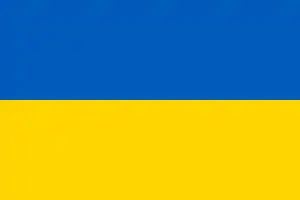
 February 7, 2014: Pegasus Airlines Flight 751, during the start of the 2014 Winter Olympics, a man attempted to hijack Pegasus Airlines Flight 751 that was on a flight from Kharkiv, Ukraine, to Istanbul, Turkey, saying he had a bomb on board, and demanding to be flown to Sochi, the host city of the 2014 Winter Olympics. The pilots turned off the inflight monitors and landed at Istanbul's Sabiha Gökçen Airport, fooling the man into thinking he was landing in Sochi. The plane, a Boeing 737-800, was escorted to Istanbul by two Turkish F-16 fighter jets. The man, who appeared to be severely intoxicated, was detained by police and taken to the Istanbul Security Headquarters.
February 7, 2014: Pegasus Airlines Flight 751, during the start of the 2014 Winter Olympics, a man attempted to hijack Pegasus Airlines Flight 751 that was on a flight from Kharkiv, Ukraine, to Istanbul, Turkey, saying he had a bomb on board, and demanding to be flown to Sochi, the host city of the 2014 Winter Olympics. The pilots turned off the inflight monitors and landed at Istanbul's Sabiha Gökçen Airport, fooling the man into thinking he was landing in Sochi. The plane, a Boeing 737-800, was escorted to Istanbul by two Turkish F-16 fighter jets. The man, who appeared to be severely intoxicated, was detained by police and taken to the Istanbul Security Headquarters.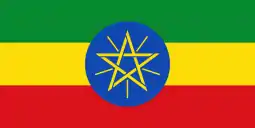

 February 17, 2014: Ethiopian Airlines Flight 702, a scheduled flight from Addis Ababa to Rome was hijacked by the unarmed co-pilot, who had locked the pilot out of the cockpit, then flew to Geneva airport. According to the airline,[134] the Boeing 767-300 (ET-AMF) was flying north over Sudan when it changed its transponder to indicate a hijacking. The aircraft circled Geneva's airport several times, before landing around 6:00am with one engine and less than 10 minutes of fuel remaining. The co-pilot surrendered to police after the plane landed.[135][136]
February 17, 2014: Ethiopian Airlines Flight 702, a scheduled flight from Addis Ababa to Rome was hijacked by the unarmed co-pilot, who had locked the pilot out of the cockpit, then flew to Geneva airport. According to the airline,[134] the Boeing 767-300 (ET-AMF) was flying north over Sudan when it changed its transponder to indicate a hijacking. The aircraft circled Geneva's airport several times, before landing around 6:00am with one engine and less than 10 minutes of fuel remaining. The co-pilot surrendered to police after the plane landed.[135][136]
 March 29, 2016: Flight MS181, an Egyptair Airbus A320 carrying 81 passengers from Alexandria to Cairo, was taken over after a passenger said he was wearing an explosives belt and was diverted to Larnaca International Airport.[137][138] The hijacker surrendered after hours of negotiations and no casualties were reported.[139]
March 29, 2016: Flight MS181, an Egyptair Airbus A320 carrying 81 passengers from Alexandria to Cairo, was taken over after a passenger said he was wearing an explosives belt and was diverted to Larnaca International Airport.[137][138] The hijacker surrendered after hours of negotiations and no casualties were reported.[139]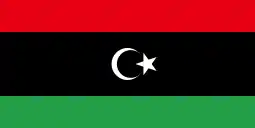
 December 23, 2016: Flight 209, an Afriqiyah Airways Airbus A320 carrying 118 passengers from Sebha, Libya to Tripoli, was diverted to Malta International Airport with two men on board claiming to carry a hand grenade.[140] The hijackers tried to blow the aircraft up, but eventually surrendered to authorities with no incident or loss of life.
December 23, 2016: Flight 209, an Afriqiyah Airways Airbus A320 carrying 118 passengers from Sebha, Libya to Tripoli, was diverted to Malta International Airport with two men on board claiming to carry a hand grenade.[140] The hijackers tried to blow the aircraft up, but eventually surrendered to authorities with no incident or loss of life. Apr 15, 2018: an airplane of Air China, flight CA1350, was hijacked and diverted to Zhengzhou Xinzheng International Airport.
Apr 15, 2018: an airplane of Air China, flight CA1350, was hijacked and diverted to Zhengzhou Xinzheng International Airport.
 Feb 24, 2019: Biman Bangladesh Airlines Flight 147 was hijacked by a 26-year-old male passenger during the first leg of a flight from Dhaka, Bangladesh, to Chittagong and Dubai. The hijacker was shot and killed by Bangladesh Army Para-Commando Brigade.[141]
Feb 24, 2019: Biman Bangladesh Airlines Flight 147 was hijacked by a 26-year-old male passenger during the first leg of a flight from Dhaka, Bangladesh, to Chittagong and Dubai. The hijacker was shot and killed by Bangladesh Army Para-Commando Brigade.[141]
See also
References
- Champion, Marc. "The Airport Security Measure That Works, Yet too few Airports Use". skift.com. Retrieved 9 April 2019.
- "Nopcsa Castle, Săcel". Castle in Transylvania. PONT group. Retrieved 9 April 2019.
- Eszenyi, Miklós. "Felsõszilvási Nopcsa Ferenc" (PDF). National Széchényi Library (in Hungarian). Retrieved 9 April 2019.
- "Clarence Frechette - Michigan's Flying Bandit". Useless Information. 7 June 2015.
- 30 years later Richards was again the victim of a failed hijacking attempt. A father and son boarded his Continental Airlines Boeing 707 in El Paso, Texas and tried to force him at gunpoint to fly the plane to Cuba hoping for a cash reward from Fidel Castro. FBI agents and police chased the plane down the runway and shot out its tires, averting the hijacking. See http://www.airdisaster.com/features/hijack/hijack.shtml Archived 2007-07-24 at the Wayback Machine
- Pereira, Aldo (1987). Breve História da Aviação Comercial Brasileira (in Portuguese). Rio de Janeiro: Europa. p. 337.
- Germano da Silva, Carlos Ari César (2008). "Uma verdadeira aventura". O rastro da bruxa: história da aviação comercial brasileira no século XX através dos seus acidentes 1928–1996 (in Portuguese) (2 ed.). Porto Alegre: EDIPUCRS. pp. 22–23. ISBN 978-85-7430-760-2.
- "PRIMA DETURNARE DE CURSA AERIANA DIN LUME". Orizont Aviatic, 34/2005.
- "ASN Aircraft accident Junkers Ju-52 registration unknown Istanbul". Aviation-safety.net. 1948-06-30. Retrieved 2016-07-30.
- "The Noose (1987)". IMDb.com. Retrieved 2016-07-30.
- "Η πρώτη αεροπειρατεία στον κόσμο έγινε από νεαρούς Έλληνες και άλλαξε τα μέτρα προστασίας στα αεροδρόμια - ΜΗΧΑΝΗ ΤΟΥ ΧΡΟΝΟΥ". Mixanitouxronou.gr. Archived from the original on 2016-08-12. Retrieved 2016-07-30.
- "Hijacking description PP-SNT". Aviation Safety Network.
- "Hijacking description PP-SNT". Aviation Safety Network.
- "Hijacking description PP-SNT". Aviation Safety Network.
- "They Flew to Exile 1950 | Free Czechoslovak Air Force". Fcafa.wordpress.com. 2011-03-12. Retrieved 2016-07-30.
- "Archived copy". Archived from the original on 2013-04-21. Retrieved 2013-02-08.CS1 maint: archived copy as title (link)
- "Burma's First Hijacking—Soon on Film". The Irrawaddy. Retrieved January 31, 2019.
- "Incident description PP-PCR". Aviation Safety Network. Retrieved May 28, 2013.
- Pereira, Aldo (1987). Breve História da Aviação Comercial Brasileira (in Portuguese). Rio de Janeiro: Europa. pp. 362–363.
- "TAA Skyjack". Trans-Australia Airlines Museum. Archived from the original on 17 September 2009. Retrieved 18 July 2011.
- "Hijacker: Cuba Suspected Spying". Latinamericanstudies.org. Retrieved 2016-07-30.
- https://www.ealradioshow.com/eastern-hijackings
- "First U.S. skyjacking attempt was in Chico, 45 years ago". Chicoer.com. Archived from the original on 2012-07-30. Retrieved 2016-07-30.
- http://www.slate.com/articles/life/history/features/2013/skyjacker_of_the_day/leon_and_cody_bearden_hijacked_a_plane_because_they_were_just_fed_up_with .html
- "Les Gleadell". The Daily Telegraph. London. July 13, 2009.
- Hijacking description at the Aviation Safety Network
- "Suspect in 1968 hijacking at JFK is captured – CNN.com". Edition.cnn.com. 2009-10-12. Retrieved 2010-05-03.
- "Former LIers recall 1968 hijacking to Cuba". Newsday.com. 2009-10-11. Retrieved 2010-05-03.
- "Did Airline Passengers Mistake a Hijacking for a 'Candid Camera' Stunt?". Snoops. 2014-09-28. Retrieved 2020-06-21.
- "Incident description October 8, 1969". Aviation Safety Network. Retrieved 14 August 2011.
- "Capture Gunman in Chapel After Hijacking Plane on Longest Flight in History". The Gettysburg Times. 1969-11-01. Retrieved 2012-06-28.
- "An Ex-Skyjacker Who Survived An Earthquake Himself Rushes Aid to Italy's Homeless". Time Inc. 1980-12-15. Retrieved 2012-06-28.
- Hughes, Roland (2019-10-26). "The longest and most spectacular plane hijack". Retrieved 2019-10-27.
- "Hearing Today for Youth, 14, in Hijack Try". Lawrence Journal-World – Google News Archive Search. 1969-11-11. Retrieved 2016-01-15.
- "Incident description November 12, 1969". Aviation Safety Network. Retrieved 15 August 2011.
- "Son of NK Kidnap Victim Seeks UN's Help", The Dong-a Ilbo, 2010-06-10, retrieved 2010-07-07
- Tristani, Captain, Eastern Air Lines (ret), J.P. (March 30, 2009). "One heck of an in-air gunfight on a civilian jet". Boston Globe. Retrieved 2009-03-30.CS1 maint: multiple names: authors list (link)
- Walker, Adrian (March 20, 2009). "Friends in high places". Boston Globe. Retrieved 2009-03-30.
- "Eastern Airlines Hijacking of 1970, resulted in the First Air Piracy Death in U.S. History". Celebrateboston.com. Retrieved 2016-07-30.
- "Incident description 4 July 1970". Aviation Safety Network. Retrieved 30 July 2011.
- "A Day of "Firsts" - Pan Am Historical Foundation". www.panam.org. Retrieved 2020-10-19.
- "Archived copy". Archived from the original on 2010-03-07. Retrieved 2010-03-05.CS1 maint: archived copy as title (link)
- "Assignment: Skyjacker". Retrieved 22 November 2014.
- "PAKISTAN AIR FORCE – Official website". Paf.gov.pk. Retrieved 2011-12-17.
- John Pike. "PAF Kamra". Globalsecurity.org. Retrieved 2012-01-29.
- "Pakistan". Ejection-history.org.uk. Archived from the original on 2012-02-13. Retrieved 2012-01-29.
- "Pilot Officer Rashid Minhas". Pakistanarmy.gov.pk. Archived from the original on 2012-04-08. Retrieved 2012-01-29.
- "Nishan-i-Haider laurelled Rashid Minhas' anniversary today". Samaa Tv. Archived from the original on 2012-06-11. Retrieved 2012-01-29.
- Congressional Record Page 25960 13 December 2001. U.S. Government Printing Office. 2001-12-18. ISBN 9780160118449. Retrieved 6 August 2011.
- "Havana Is Haven for Fugitive '70s Hijacker". Washington Post Foreign Service. Archived from the original on 8 August 2010. Retrieved 6 August 2011.
- General, The Office of the Secretary to the Governor. "The Governor General of Canada". Retrieved 2017-12-24.
- "The Montreal Gazette - Google News Archive Search". news.google.com. Retrieved 2017-12-24.
- "The Montreal Gazette - Google News Archive Search". news.google.com. Retrieved 2017-12-24.
- "FBI makes new bid to find 1971 skyjacker". The San Francisco Chronicle. Associated Press. 2008-01-01. Archived from the original on January 3, 2009. Retrieved 2009-10-04.
- Krajicek, David. "The D.B. Cooper Story: 'Everything Is Ready'". Crime Library. Archived from the original on 2008-05-17. Retrieved 2009-10-04.
- Pasternak, Douglas (2000-07-24). "Skyjacker at large". U.S. News & World Report. Archived from the original on 2009-10-04. Retrieved 2009-10-04.
- Jim Ewell & Tom Williams (1972-01-13). "Braniff Hijacker Taken as Police Storm Plane". The Dallas Morning News.
- Tom Johnson (1972-01-13). ""Keep Him Going," Dispatcher Offers". The Dallas Morning News.
- "On This Day—23 February1972: Hijackers surrender and free Lufthansa crew". BBC. February 23, 1972. Retrieved 29 August 2013.
- The Encyclopedia of Kidnappings by Michael Newton, Checkmark Books; 1st edition (April 1, 2002), 129
- The Dispatch, Lexington, N.C. 2 June 1972. Kurt Lassen, p12.
- The Morning Call. Frank Whelan. Sunday Call-Chronicle, 30 June 1985.
- "Incident description 24 May 1972". Aviation Safety Network. Retrieved 17 June 2017.
- "Hijack suspects seized in Paris". The Miami News. Jan 27, 1975.
- "Hijack Suspects Arrested". Ocala Star-Banner. Jan 26, 1975.
- "Skyjacker Wants To Return Home". Merced Sun-Star. May 7, 1977.
- "France hands over suspect in 1972 hijacking". The Deseret News. Jul 27, 1986.
- TIM O'NEIL • toneil@post-dispatch.com > 314-340-8132 (2011-06-25). "A Look Back • Airline hijacking at Lambert in 1972 turns bizarre". Stltoday.com. Retrieved 2011-12-17.
- Hijacking description at the Aviation Safety Network
- Emch, Tom. "Anatomy of a Hijack". San Francisco Examiner/Chronicle. Retrieved 9 December 2013.
- Newton, Michael (2002). "The Encyclopedia of Kidnappings (Facts on File Crime Library)" (PDF). Facts On File, Inc. Archived from the original (PDF) on 2012-04-25.
- "FBI Charges 5 – Escaped Convicts in Hijacking Plot". The Spokesman-Review. Aug 3, 1972.
- "Hijackers Order Jet to Algeria". The Palm Beach Post. Aug 1, 1972.
- Reeve, Simon (August 2011). One Day in September. ISBN 9781611450354. Retrieved 22 November 2014.
- Greenfeter, Yael (4 November 2010). "Israel in shock as Munich killers freed". Haaretz. Retrieved 26 July 2013.
- "Hijacker surrenders in Montreal to authorities". Newspapers.com. Retrieved 22 November 2014.
- "ASN Aircraft accident Tupolev 104B CCCP-42505 Leningrad". Aviation-safety.net. Retrieved 2010-05-03.
- "ASN Aircraft accident Tupolev 104B CCCP-42411 Chita". Aviation-safety.net. Retrieved 2010-05-03.
- nid=1876&dat=19730521&id=unwsAAAAIBAJ&sjid=1swEAAAAIBAJ&pg=5158,4705778 "Hijacked Plane returns after Five Country Trip" Check
|url=value (help), The Spartanburg Herald, Spartanburg, S. C., 101 (100), p. 1, May 21, 1973 - "Hijackings, KLM 1973". Büttni-Malta. Archived from the original on 2011-07-22. Retrieved 2010-06-18.
- Henriques-Gomes, Luke (16 January 2021). "'It was life or death': the plane-hijacking refugees Australia embraced". The Guardian. Retrieved 17 January 2021.
- "Hijacking a Saga of Fear, Fascination 'This Flight Has Been Hijacked,' said a Voice. The Splence Could Almost Be Heard". Retrieved 2 July 2019.
- "Tämä kone on kaapattu". Retrieved 22 November 2014.
- "1978 airplane hijacking information (in Finnish) from yle.fi". Elävä arkisto – YLE. Retrieved 22 November 2014.
- "Unholier Than Thou". Outlook India. 18 January 2000. Retrieved December 24, 2011.
- Kentucky New Era (Dec 22, 1978). "17-Year-Old Hijacks To Free Hijacker". Kentucky New Era. p. 11. Retrieved January 10, 2011.
- sydney&pg=6862%2C1215587 "Police Kill Lone Jumbo Hijacker" Check
|url=value (help). The Age. Apr 5, 1979. pp. 1, 4. Retrieved April 30, 2017. - "Man Dies, Shot in Hijack Attempt". The Sydney Morning Herald. Apr 5, 1979. p. 1. Retrieved April 30, 2017.
- "Crew Disarms Ex‐Coal Miner Trying to Hijack a Jet to Israel (Published 1971)". The New York Times. 1971-06-05. ISSN 0362-4331. Retrieved 2020-10-19.
- "Attorney: Hijacker couldn't hurt anyone". United Press International. 1983-01-21. Retrieved 2017-10-17.
- "Mercenaries fleeing an abortive coup in the Seychelles islands". UPI. 26 November 1981. Retrieved 2019-06-13.
- "MAN KILLED IN ATTEMPTED HIJACKING ON COAST". New York Times. 1983-01-21. Retrieved 2016-07-30.
- "Фаталният полет до Варна - 50-те най-големи атентата в българската история - Крум Благов". www.krumblagov.com. Retrieved 2016-06-07.
- "Виенският случай или защо Варна се превърна във Виена". Archived from the original on 2016-04-27.
- "Petel.bg - новини - Сензационно разкритие от последните минути: Намереният мъртъв Лъчо Терориста отвлече самолета София-Варна през 1983 г." Petel.bg. Retrieved 2016-06-07.
- "Incident description 3 February 1984". Aviation Safety Network. Retrieved 4 August 2011.
- "Fin détournement Boeing - Vidéo". Ina.fr (in French). 1970-01-01. Retrieved 2016-07-30.
- "Détournement avion - Vidéo". Ina.fr (in French). 1970-01-01. Retrieved 2016-07-30.
- "Itinéraire Boeing - Vidéo". Ina.fr (in French). 1970-01-01. Retrieved 2016-07-30.
- "ASN Aircraft accident Boeing 737-2A8 Advanced VT-EFK Dubai Airport (DXB)". Aviation-safety.net. Retrieved 2016-07-30.
- "Morningside High School - Inglewood". Mhsmaneline.org. Retrieved 2016-07-30.
- "WORLD | History of airliner hijackings". BBC News. 2001-10-03. Retrieved 2010-05-03.
- "Passengers, Crew in Soviet Hijacking All Safe". Los Angeles Times. December 26, 1985. Retrieved 10 July 2014.
- "SUSPECT SEIZED AFTER THREAT IS MADE ABOARD PLANE". The New York Times. Associated Press. January 11, 1987. Retrieved 29 January 2017.
- "Man Held in Threat to Start Chemical Fire on Jetliner". Los Angeles Times. Associated Press. January 11, 1987. Retrieved 29 January 2017.
- "1987: Attempted hijacking in Fiji foiled -- 19 May -- Today in History". Ministry for Culture and Heritage. 14 November 2013. Retrieved 6 January 2014.
- Ap (1987-12-24). "15-Year-Old Hijacks KLM Plane; Incident Ends With Boy's Capture". The New York Times. ISSN 0362-4331. Retrieved 2020-08-25.
- "BBC ON THIS DAY | 5 | 1988: Hijackers free 25 hostages". BBC News. 1986-04-05. Retrieved 2016-07-30.
- Ranstorp, Hizb'allah in Lebanon, (1997), p.95
- Greenwald, John, Sam Allis, and David S. Jackson. "Terrorism Nightmare on Flight 422." TIME. Monday 25 April 1988. Retrieved on 4 March 2009.
- "Incident description PP-SNT". Aviation Safety Network. Retrieved 16 May 2011.
- "Sangue no vôo 375" (in Portuguese). Abril: Veja. 5 October 1988. Retrieved 16 May 2011.
- "2 Czech Youths Hijack Jetliner to West Germany". Los Angeles Times. March 30, 1989. Retrieved August 19, 2010.
- siteadmin (2009-06-20). "'Our June 12 Plane hijack story'-Richard Ogunderu". Sahara Reporters. Retrieved 2020-08-24.
- Harro Ranter (3 September 1996). "ASN Aviation Safety Database". Retrieved 22 November 2014.
- Guardian Staff (1999-04-28). "Terror on flight 9463". The Guardian. ISSN 0261-3077. Retrieved 2020-10-19.
- "Recordando los 10 años del secuestro del Fokker de Avianca". Noticias ABC Colombia.
- "Incident description PP-SMG". Aviation Safety Network. Retrieved 16 May 2011.
- Maschio, José (21 August 2000). "PF liga sequestro de avião da VASP à rebelião em penitenciária em Roraima" (in Portuguese). Folha Online. Retrieved 16 May 2011.
- "Saudi hijack passengers freed". BBC World. 14 October 2000. Retrieved December 25, 2010.
- "Hijacked Saudi plane returns safely to Riyadh". Saudi Embassy. 2000-09-16. Retrieved December 25, 2010.
- "Saudi Hijacker Extradited". USA Today. 18 November 2003. Retrieved December 25, 2010.
- "ASN Aircraft accident Tupolev 154 Baku, Uvda Air Force Base". Aviation-safety.net. 2000-11-11. Retrieved 2010-05-03.
- "ASN Aircraft accident Tupolev 154M RA-85619 Medina". Aviation-safety.net. Retrieved 2010-05-03.
- "Passengers overpower plane hijacker in Spain's Canary Islands, suspect arrested". USA Today. February 15, 2007. Retrieved May 8, 2010.
- "Archived copy". Archived from the original on 2008-06-22. Retrieved 2008-03-07.CS1 maint: archived copy as title (link)
- "Turkish Airlines hijack attempt foiled by passengers", Hürriyet, January 5, 2011
- Hradecky, Simon (24 April 2011). "Accident: Alitalia A321 en route on Apr 24th 2011, attempted hijack". Aviation Herald. Retrieved 25 April 2011.
- "ASN Aircraft accident 24-APR-2011 Airbus A321-112 I-BIXA". Aviation-safety.net. Retrieved 2011-12-17.
- "Plane hijacking fouled in west". Foxnews.com. June 29, 2012. Retrieved June 29, 2012.
- "Ethiopian Airlines flight ET-702 of 17 February 2014". Ethiopian Airlines Press Releases. Archived from the original on 21 February 2014. Retrieved 17 February 2014.
- "Hijacked Ethiopian plane probably flown to Switzerland for asylum". 17 February 2014. Archived from the original on 22 February 2014. Retrieved 17 February 2014.
- "Hijacker arrested after Ethiopian Airlines flight forced to land in Geneva". The Guardian. 17 February 2014. Retrieved 17 February 2014.
- Kourtoglou, Yiannis (2016-03-29). "EgyptAir hijack ends with passengers freed". Reuters. Retrieved 2016-07-30.
- "EgyptAir Plane Hijacked in Blow to Struggling Egypt Tourism". Bloomberg.com. 2016-03-29. Retrieved 2016-07-30.
- McLaughlin, Eliott C. (2016-03-30). "EgyptAir hijacker arrested, passengers freed, officials say - CNN.com". Edition.cnn.com. Retrieved 2016-07-30.
- "BREAKING Hijacked Libyan plane flight #8U209 lands in Malta, hijackers claiming to be in possession of hand grenade". 23 December 2016.
- "Reuters".
This article is issued from Wikipedia. The text is licensed under Creative Commons - Attribution - Sharealike. Additional terms may apply for the media files.